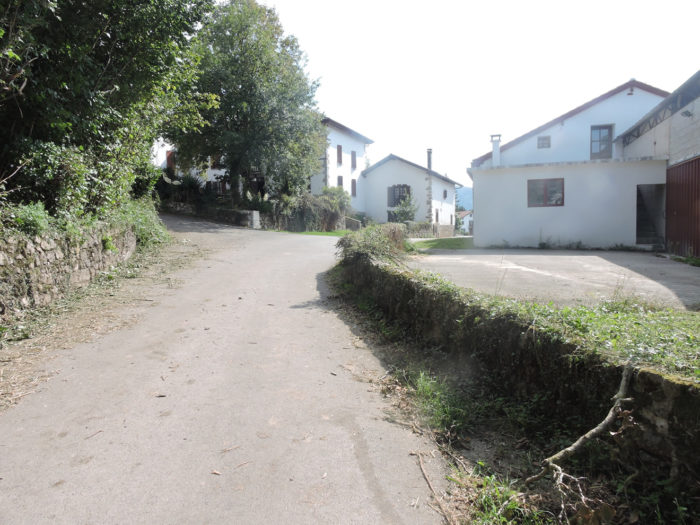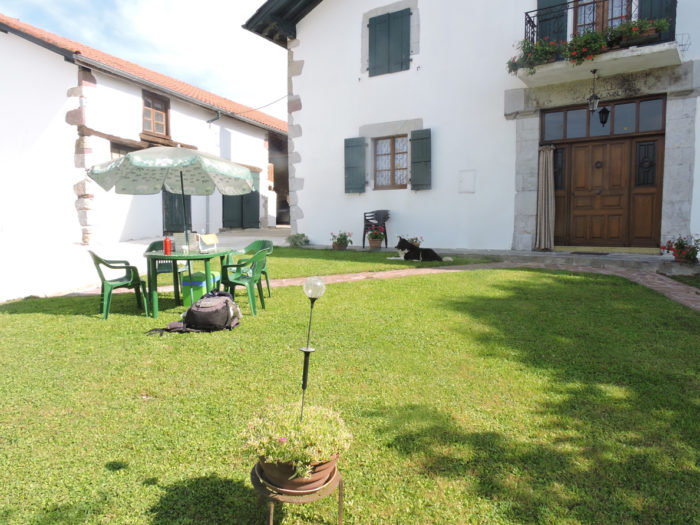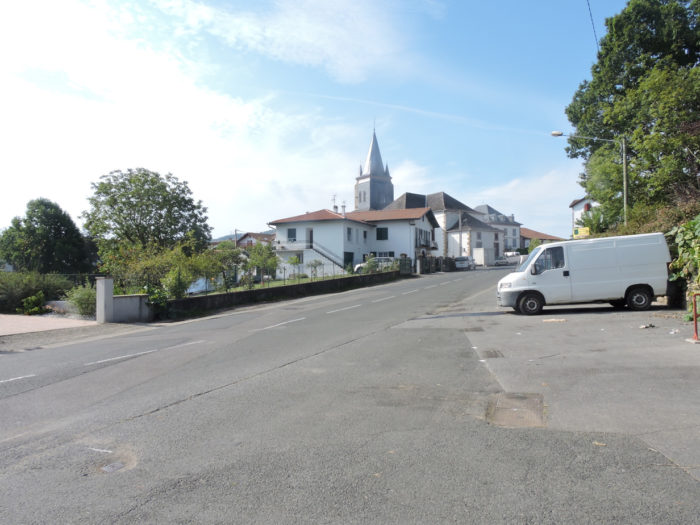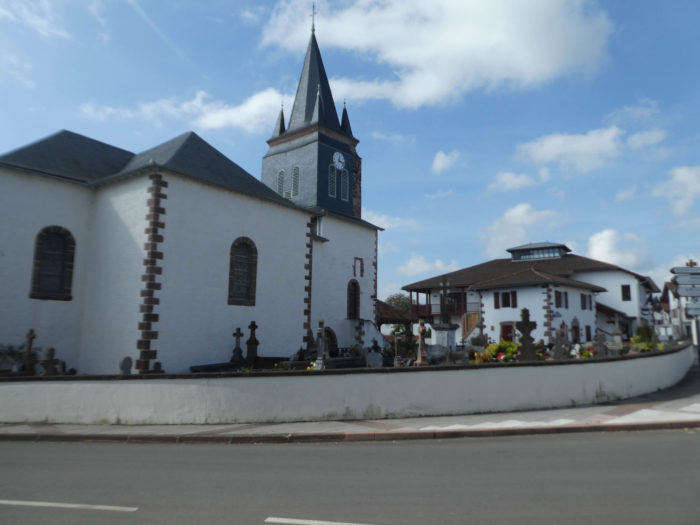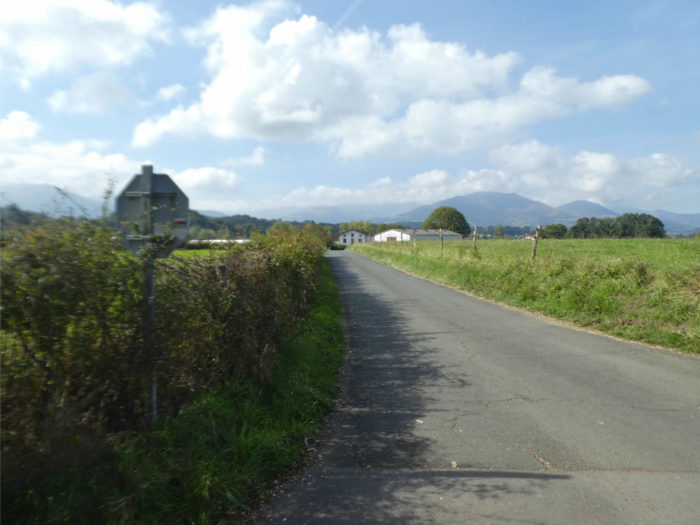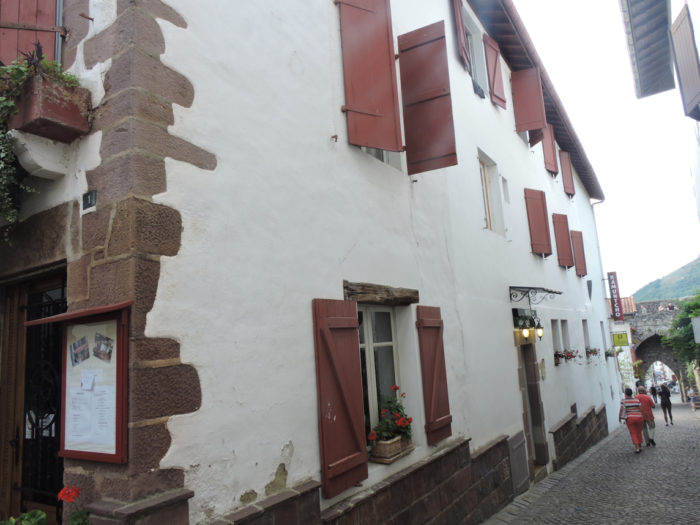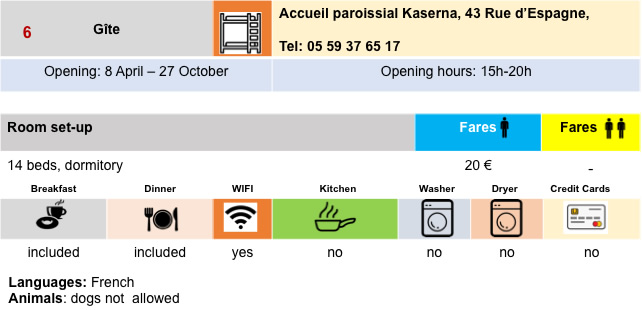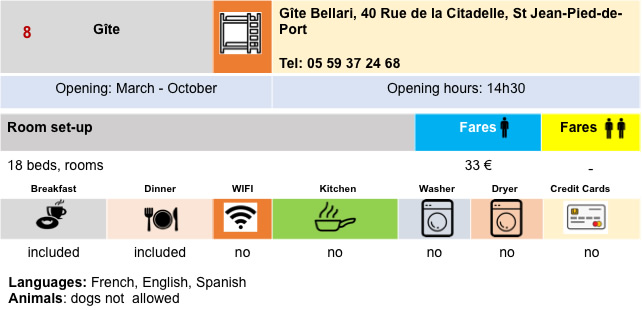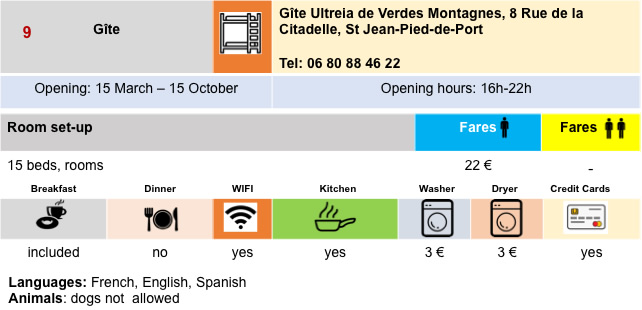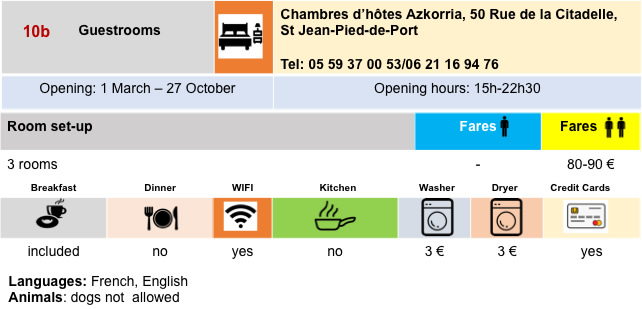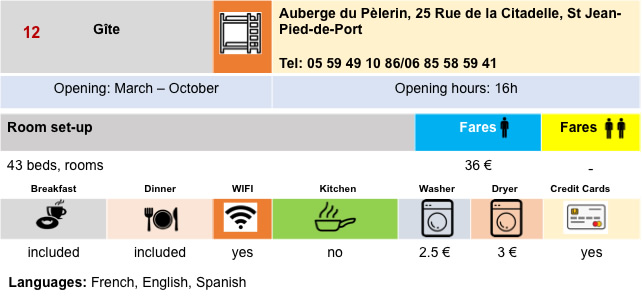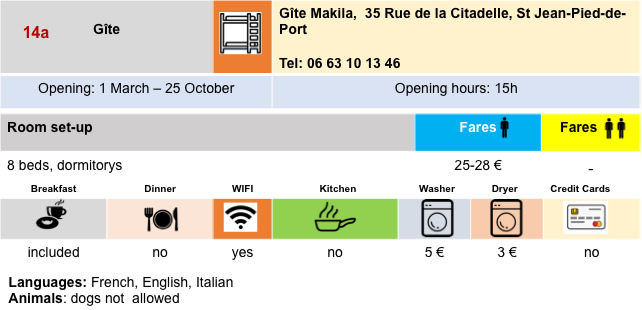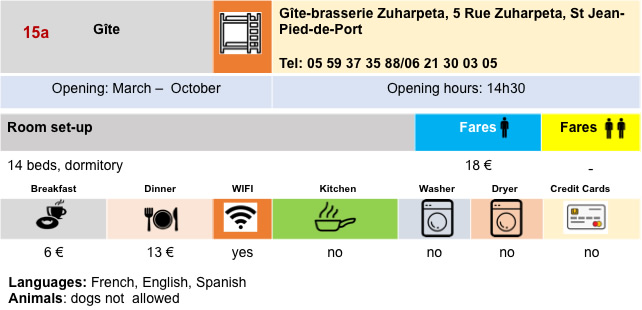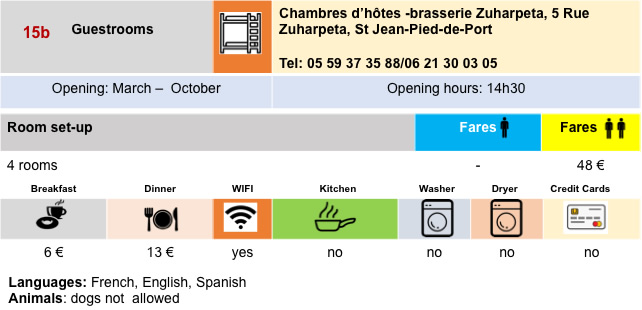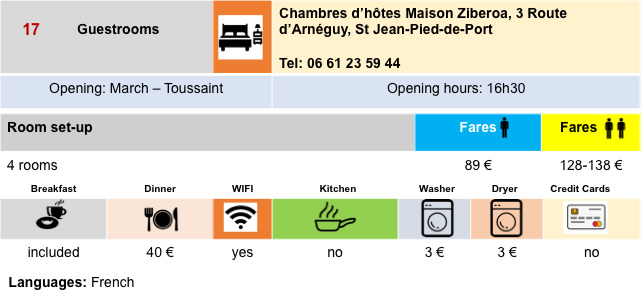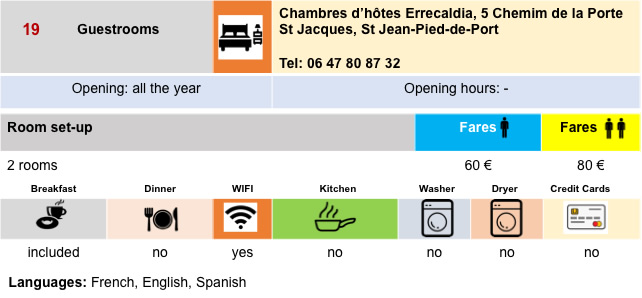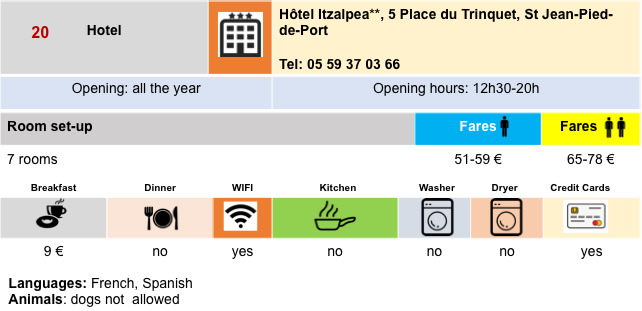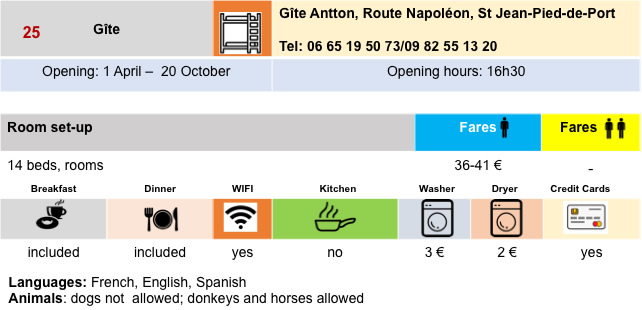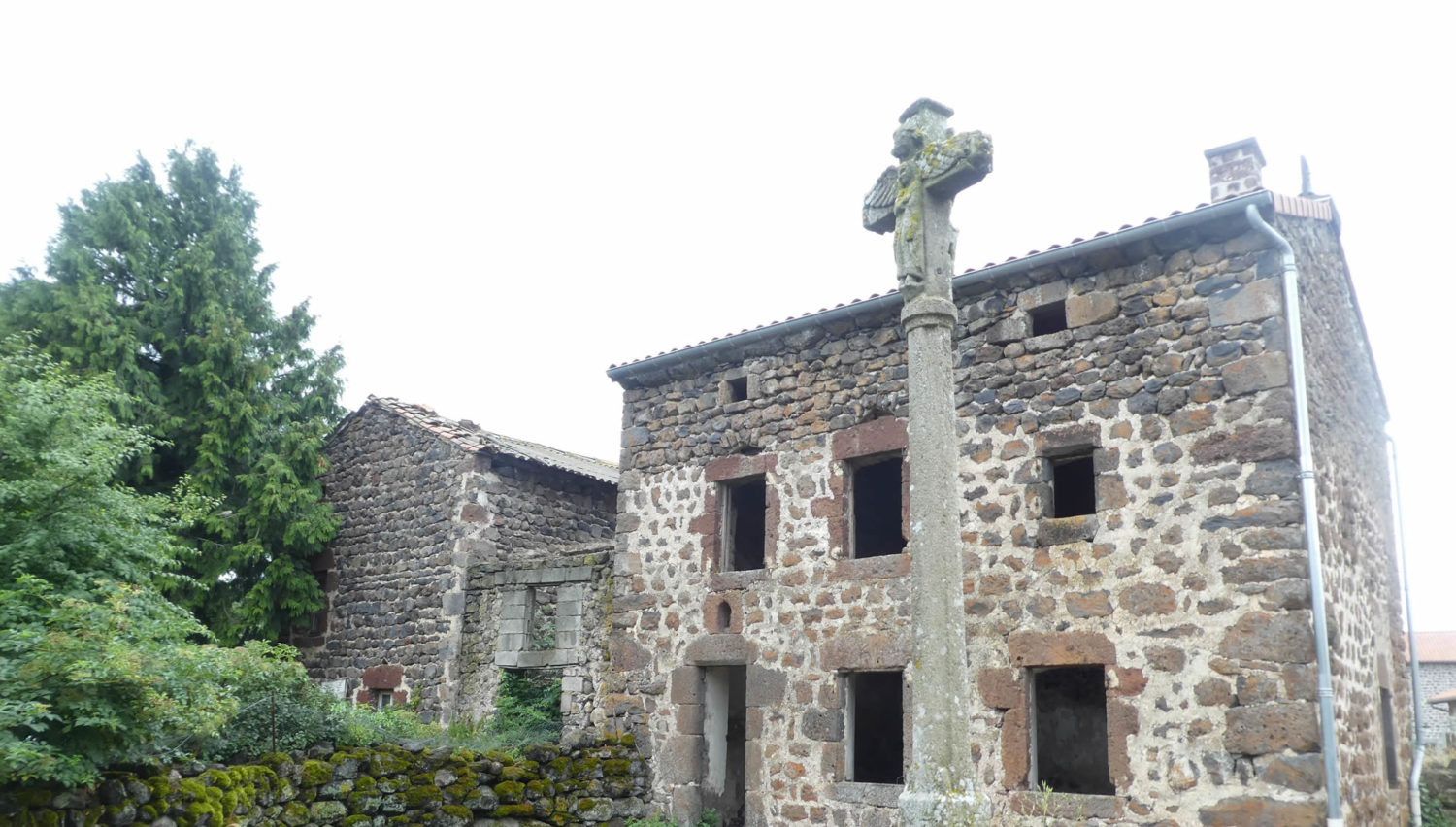At the foot of the Pyrenees
DIDIER HEUMANN, MILENA DELLA PIAZZA, ANDREAS PAPASAVVAS
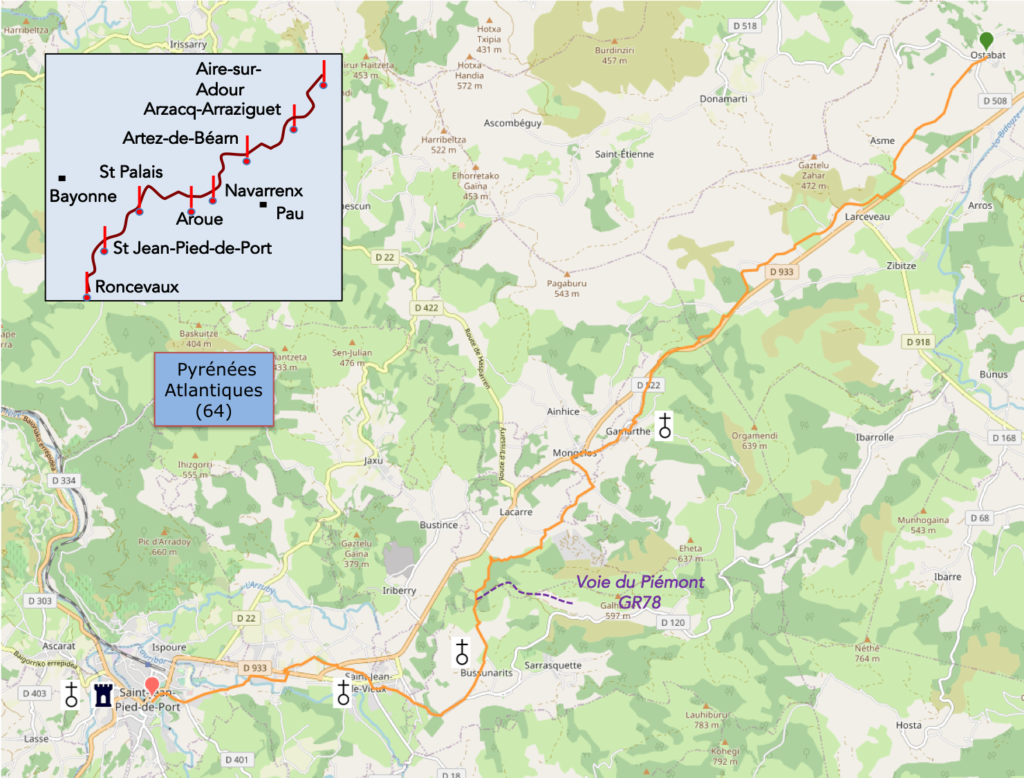
We divided the course into several sections to make it easier to see. For each section, the maps show the course, the slopes found on the course, and the state of the roads. The courses were drawn on the “Wikilocs” platform. Today, it is no longer necessary to walk around with detailed maps in your pocket or bag. If you have a mobile phone or tablet, you can easily follow routes live.
For this stage, here is the link:
https://fr.wikiloc.com/itineraires-randonnee/de-ostabat-a-st-jean-pied-de-port-par-le-gr65-88651020
It is obviously not the case for all pilgrims to be comfortable with reading GPS and routes on a laptop, and there are still many places in France without an Internet connection. Therefore, you can find a book on Amazon that deals with this course. Click on the book title to open Amazon.
If you only want to consult lodging of the stage, go directly to the bottom of the page.
Today you’ll arrive at the end of France. Beyond Ostabat, the journey is less exciting, although it crosses the charming landscapes of Lower Navarre, as much of the route is on tarmac. As accommodation is limited in Ostabat, many pilgrims travel a few kilometers further to find accommodation in Geineko Etxea or Larceveau. This is the last push before Spain. Many French pilgrims will not go to Spain in one go. They will stop at St Jean-Pied-de-Port, even if some will continue on the route on a later occasion. The end of the trip today is the citadel of Saint-Jean Pied de Port, built in 1628 and remodeled by Vauban, whose function was to defend France against Spain. In this ancient capital of Lower Navarre, founded on the initiative of the King of Navarre in the 12th century, there are always people. When you get there, alone on the road, you are quickly plunged into the hustle and bustle of the small town. A shock! Because tourists and pilgrims of all nationalities go up and down Rue de la Citadelle. The town is an important departure point towards Santiago de Compostela. On average, there are more than 50,000 pilgrims per year who pass through the city.
Difficulty of the course: This is a stage with low slope variations (+351 meters/-328 meters). The route follows slight undulations to St Jean-Pied-de Port. However, we have to sign the climb to the cross of Galzetaburu, a little more demanding, which unfortunately takes place on or next to a very busy departmental road. It’s also quite steep towards the Oyhanzarre Pass, where the GR78 comes from, the Compostela route coming from Piedmont.

Another day on the tar at the end of GR65 track:
- Paved roads: 18.4 km
- Dirt roads: 4.1 km
Sometimes, for reasons of logistics or housing possibilities, these stages mix routes operated on different days, having passed several times on Via Podiensis. From then on, the skies, the rain, or the seasons can vary. But, generally this is not the case, and in fact this does not change the description of the course.
It is very difficult to specify with certainty the incline of the slopes, whatever the system you use.
For “real slopes”, reread the mileage manual on the home page.

Section 1: In the Basque countryside.
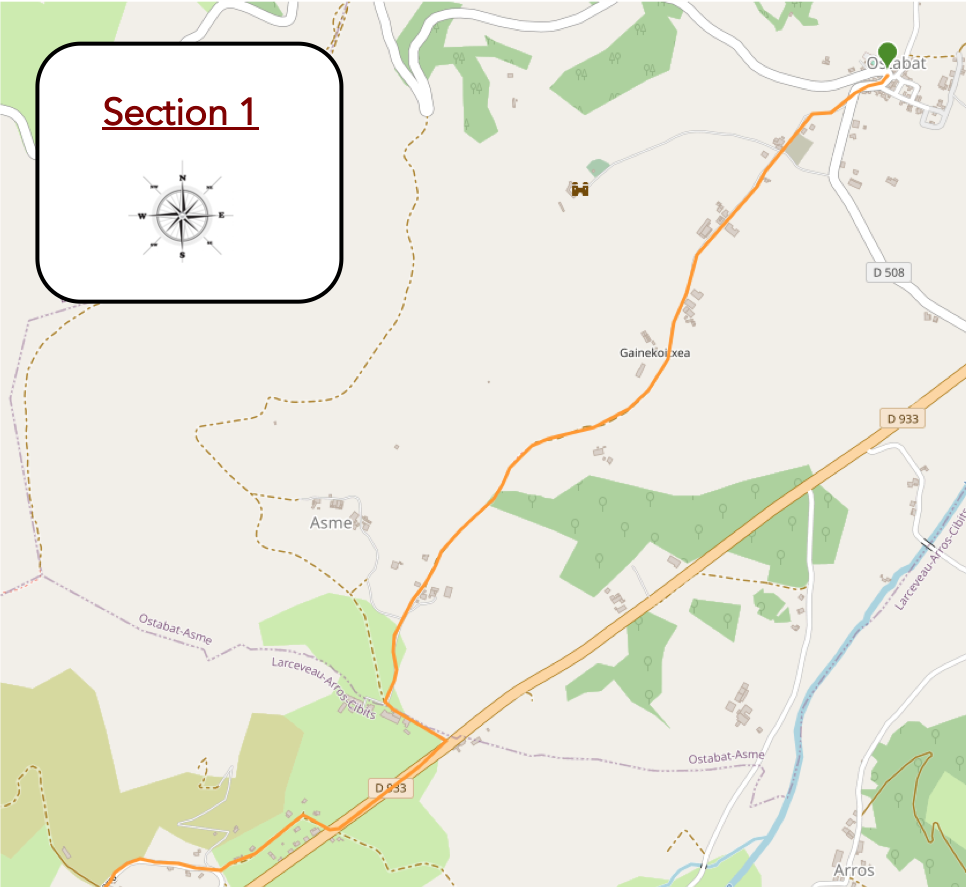
General overview of the difficulties of the route : course without any difficulty.

| At the exit of Ostabat, a paved road descends from the village. |
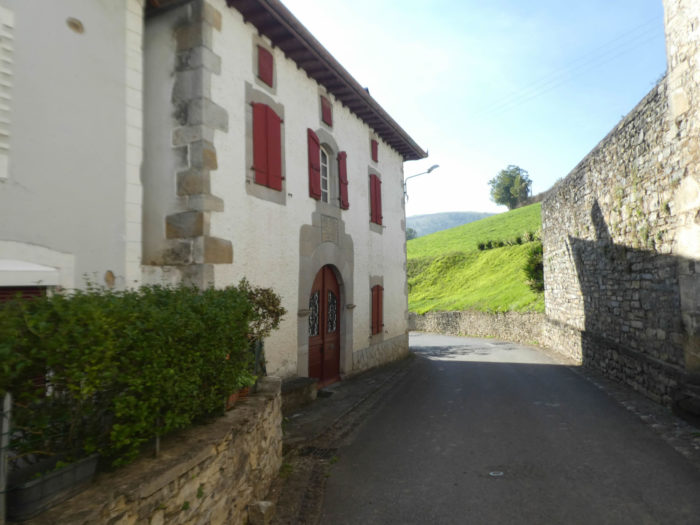 |
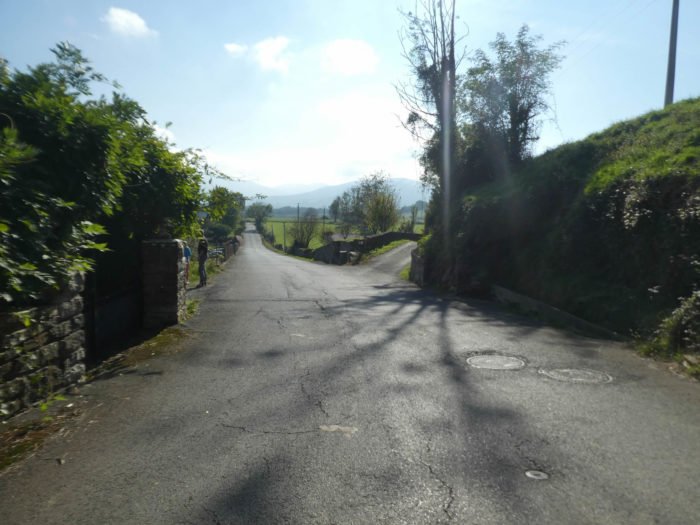 |
| The GR65 does not stay on the axis. Quickly, it takes a smaller road that heads to the Geineko Etxea farm. |
 |
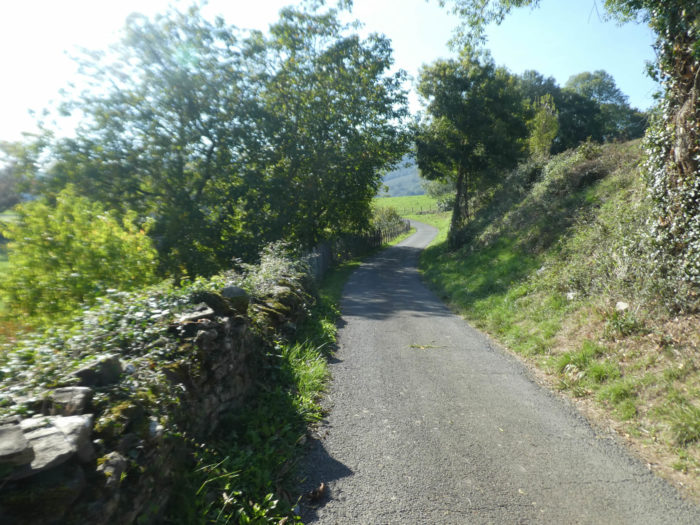 |
| The landscape is charming, in the middle of meadows, a few cornfields, alongside Basque houses with their signature red shutters. |
 |
 |
| Then the road climbs steeply towards the farm, which is the largest gîte in the region. Many pilgrims who did not find a place in Ostabat spend the night here. |
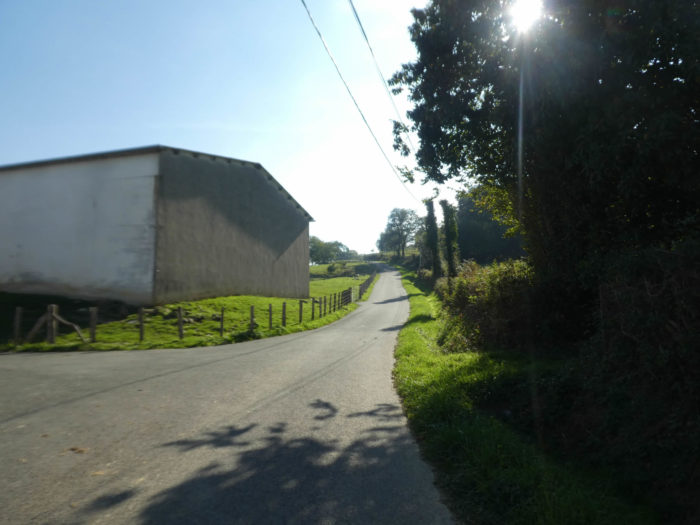 |
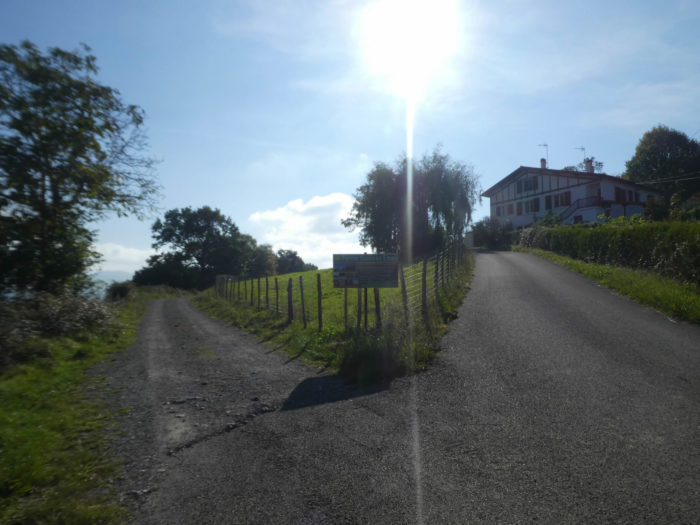 |
| Beyond the farm a pathway, initially stony, quickly transforms into a grassy and dirt track, which reaches the undergrowth. |
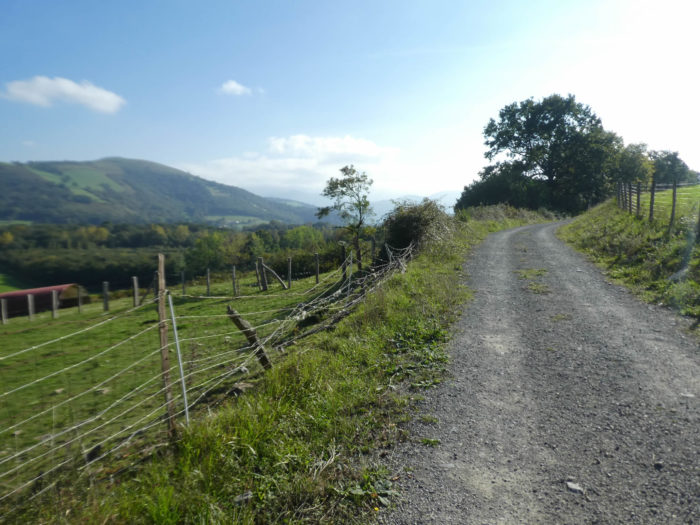 |
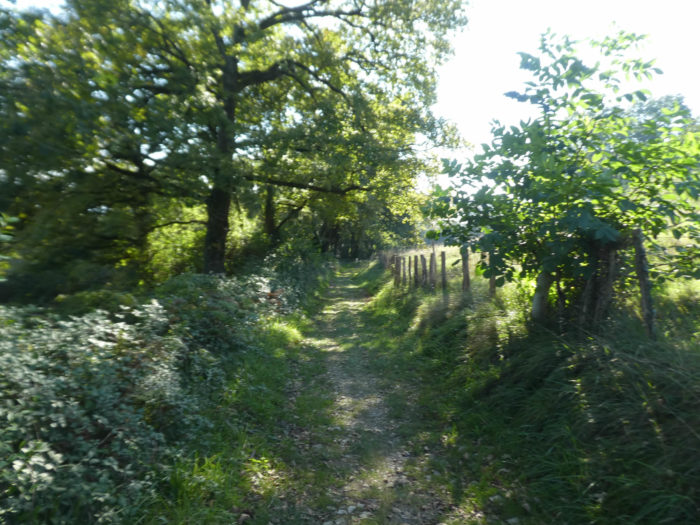 |
| The crossing of the wood is pleasant under the deciduous trees, mostly oaks and maples. |
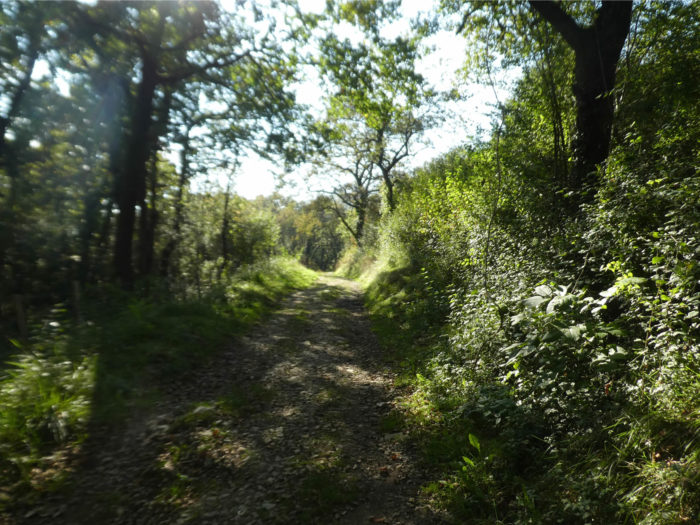 |
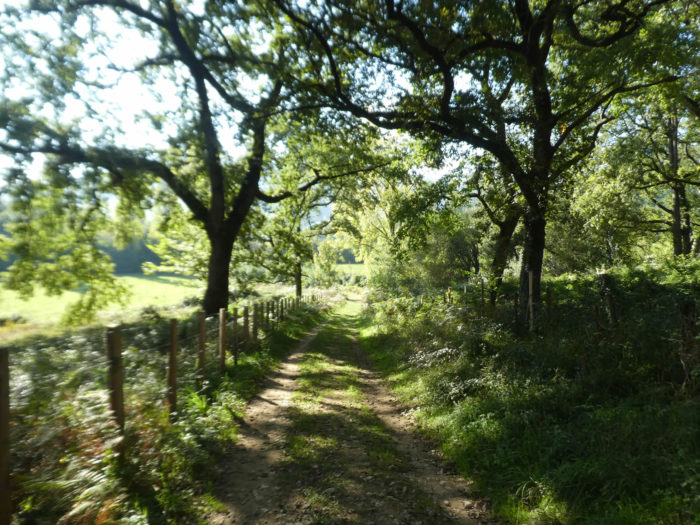 |
| Further on, the pathway becomes stonier and crosses an undergrowth which has become more disorderly, wilder, in the ferns burnt by the sun. |
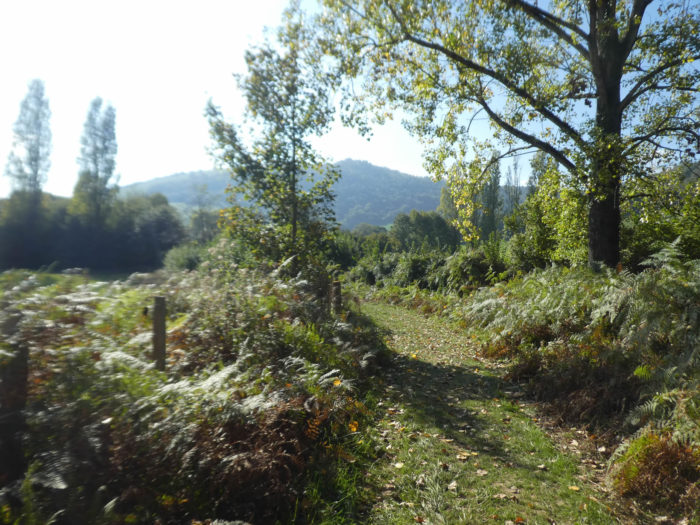 |
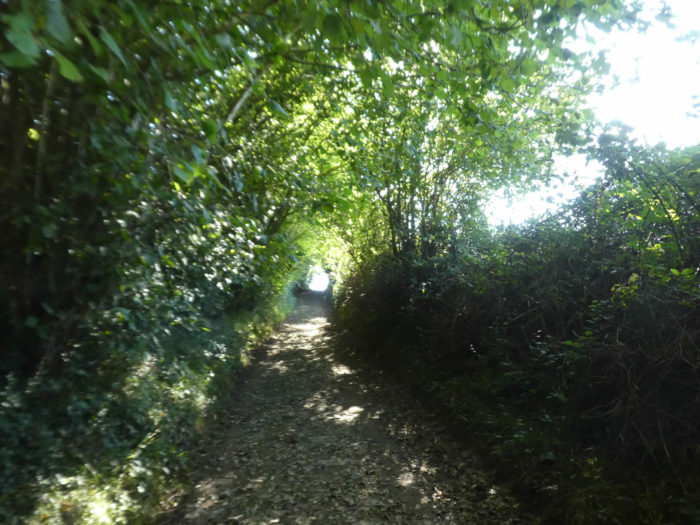 |
| At the bottom of the undergrowth, the pathway finds the open air back near a stone cross. The Pyrenees take shape in front of you. |
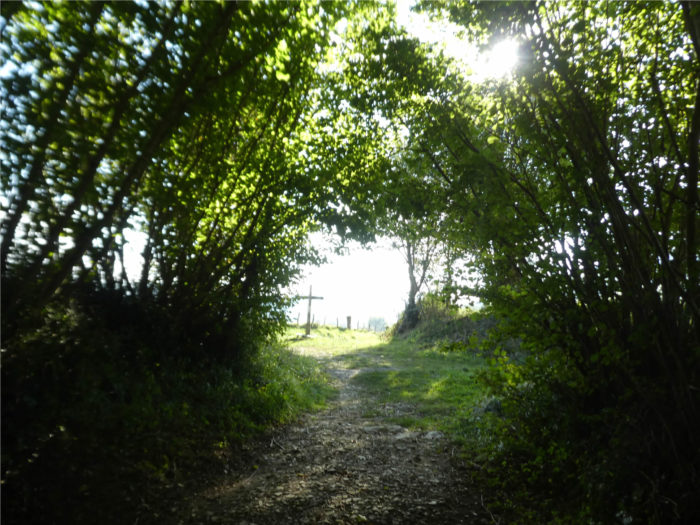 |
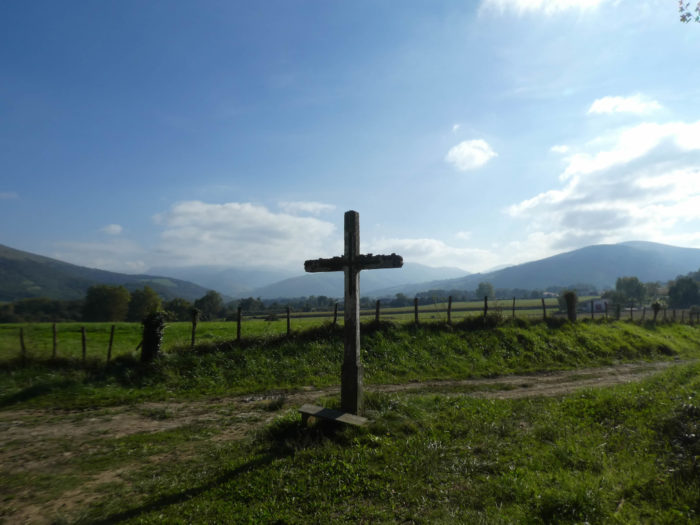 |
| Through the cornfields, it then reaches the peasant houses of Etxela. |
 |
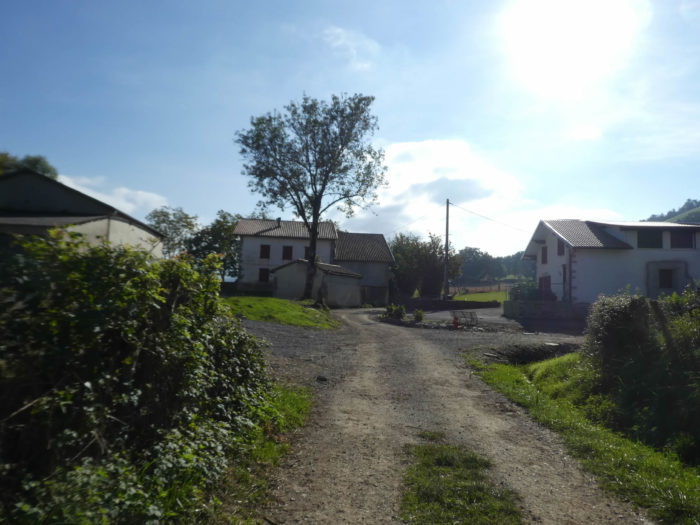 |
| The hamlet here is very scattered in the fields. |
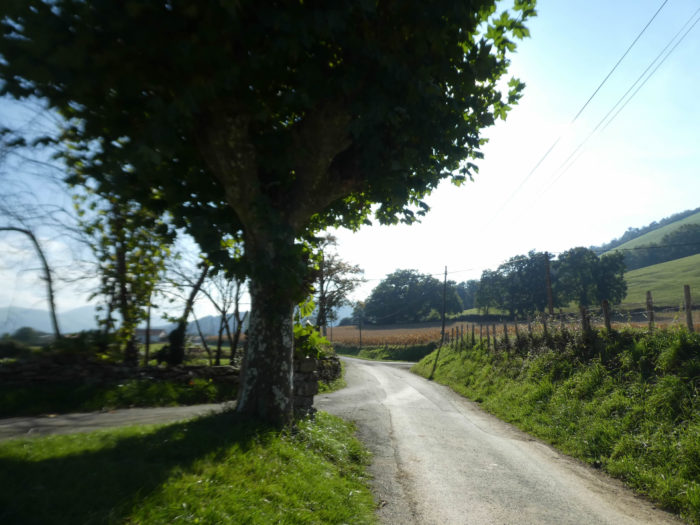 |
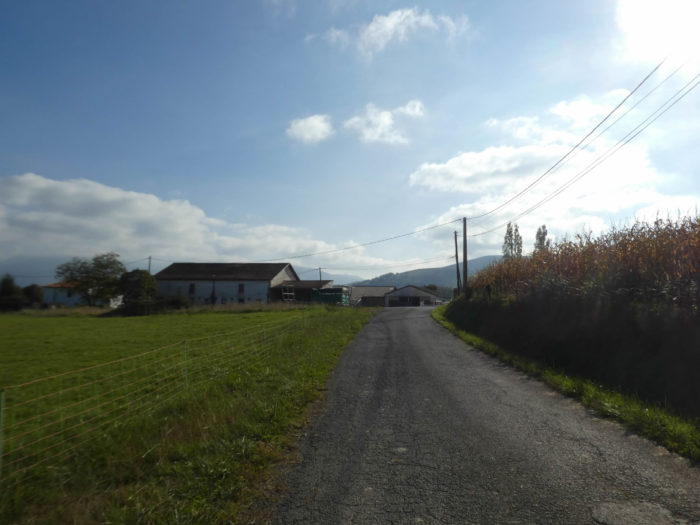 |
| Behind the last houses and farms of the hamlet, a small road joins the departmental D933, the main axis of the valley. |
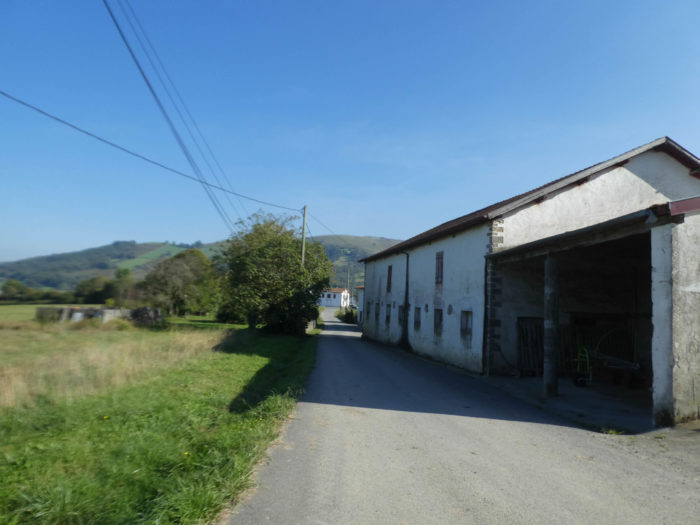 |
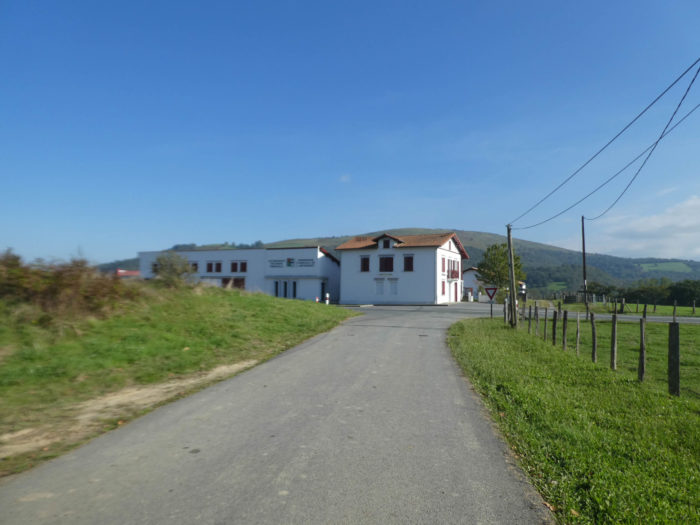 |
| The GR65 then leaves on the departmental road towards Larceveau. Traffic is often busy but there is a grassy strip on the side. |
 |
 |
| At the entrance to Larceveau, GR path leaves the departmental road to pass over the road. If you continue a few hundred meters on the D933 road, you will find a hotel where some pilgrims stop to eat or stay. |
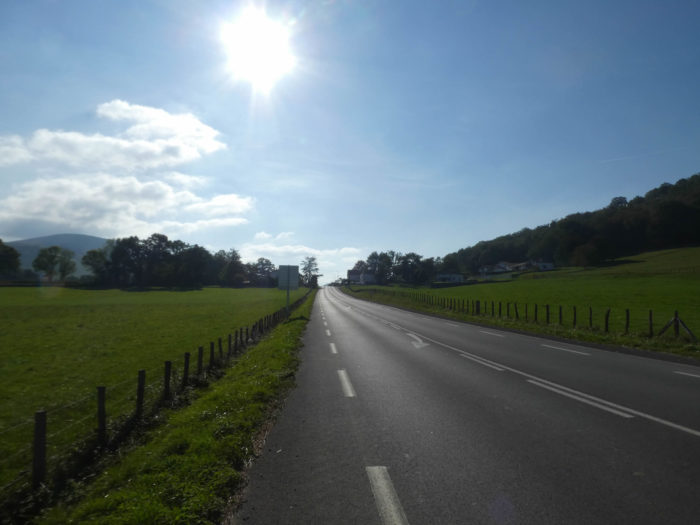 |
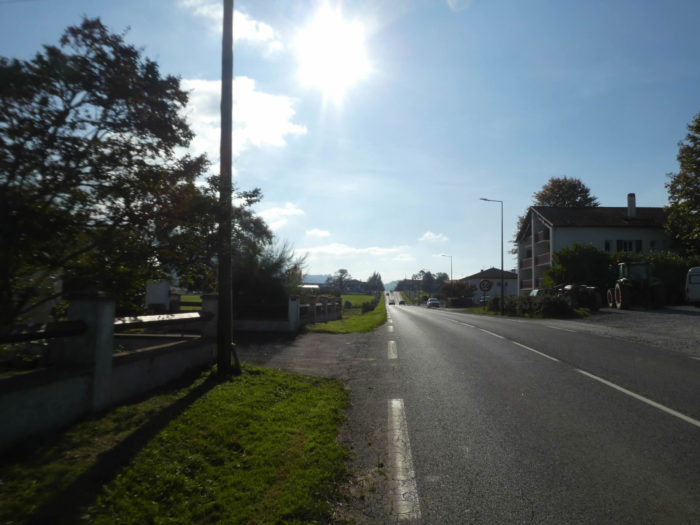 |
| For those who have slept or simply made a short stop at the Auberge de Larceveau, a short shortcut leads to the GR65 back, which runs a little above, parallel to the departmental road. |
 |
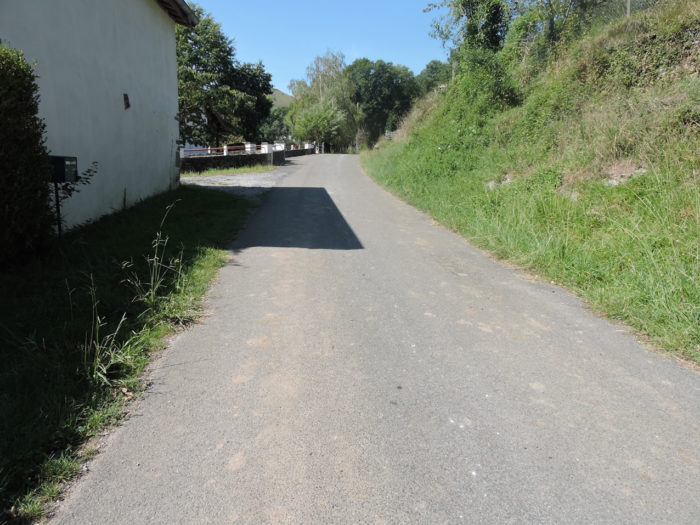 |
| The road then runs along the simple, but quite beautiful, Basque houses of the heights of Larceveau. |
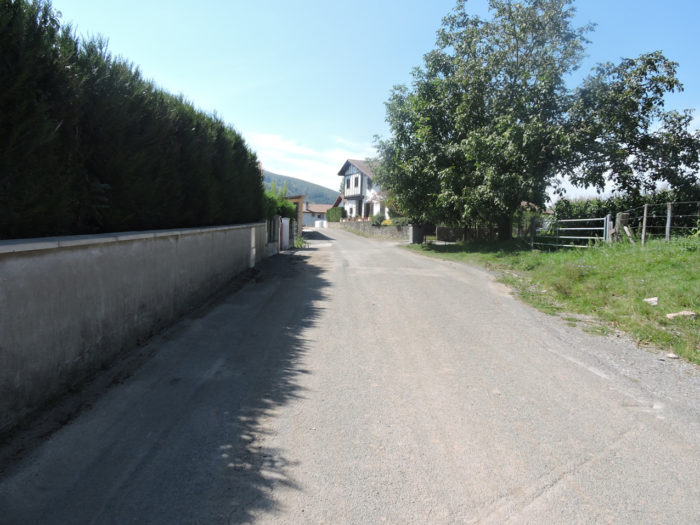 |
 |
Section 2: In the villages and the Basque countryside.
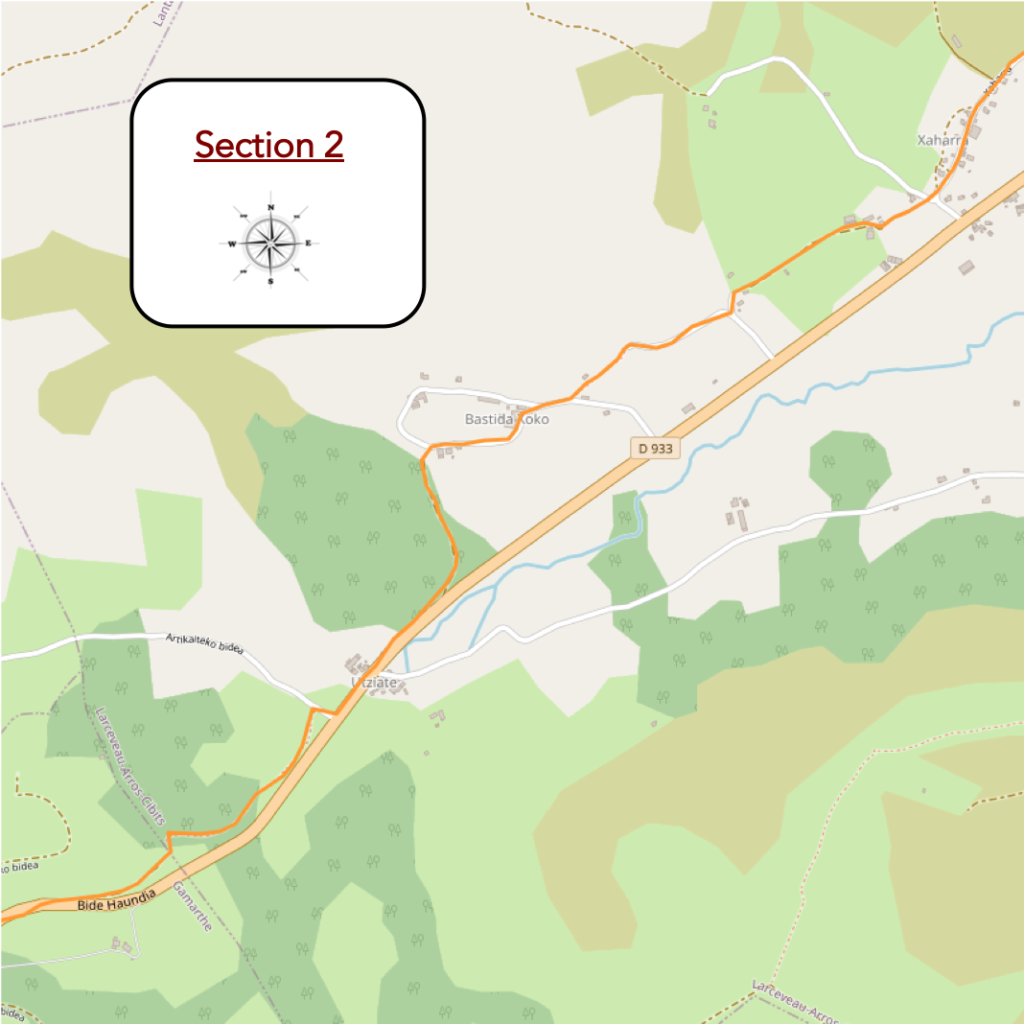
General overview of the difficulties of the route : course without any difficulty.

| Further on, the hamlets follow one another. The small asphalt flattens to Xaharra, a hamlet just as charming as the previous one. Everything is clean, pretty. Basque country architecture exudes an undeniable charm. They are never big farms, but houses in the same uniform, the same unit. |
 |
 |
| The GR65 leaves the village, as it entered, in total gentleness. A pathway dawdles in the grass. It almost looks like a golf green. |
 |
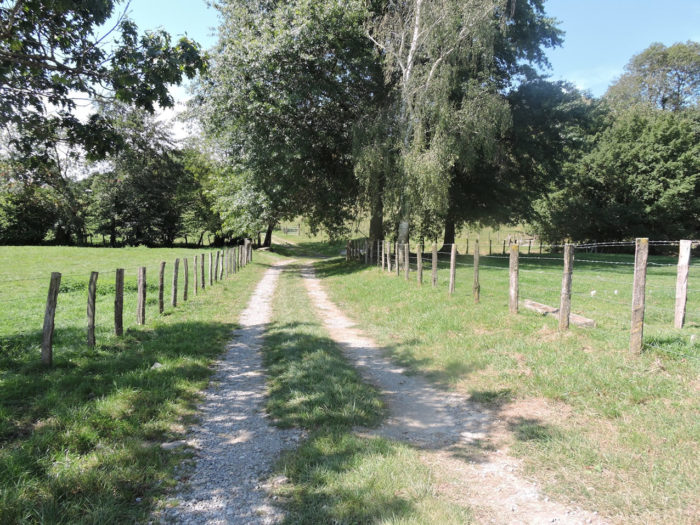 |
| A small pathway then leaves in the green meadow and its groves to cross a branch of the pretty Artikaïteko brook, which winds for a long time in the countryside and the undergrowth before joining the Bidouze River. |
 |
 |
| The pathway continues between countryside and discreet undergrowth. Throughout the region, large oaks rule the roost, with occasional ash and rare chestnuts and medium-sized maples. |
 |
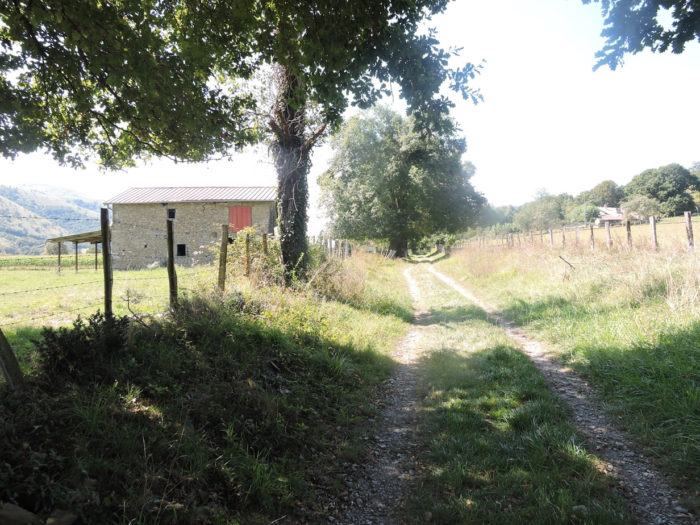 |
| There are also a few cornfields in the middle of the meadows, but they have become more discreet for a long time. On your left, you can sometimes see the D933 departmental road, which runs parallel to the GR65 in the plain. |
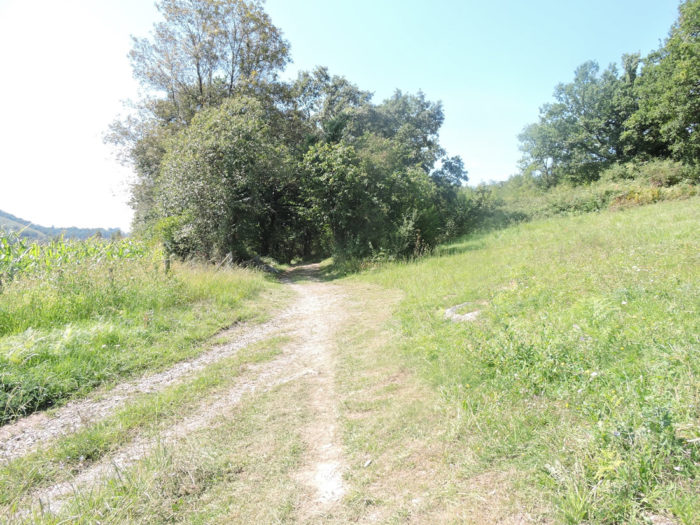 |
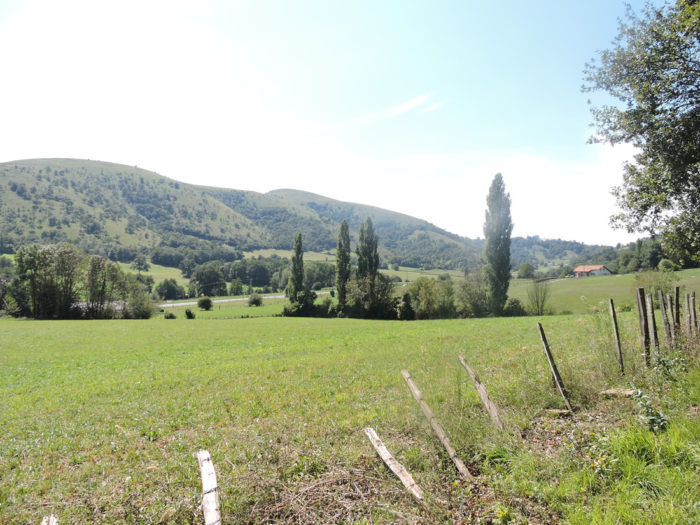 |
| In this relaxing countryside, the foot moves forward effortlessly. |
 |
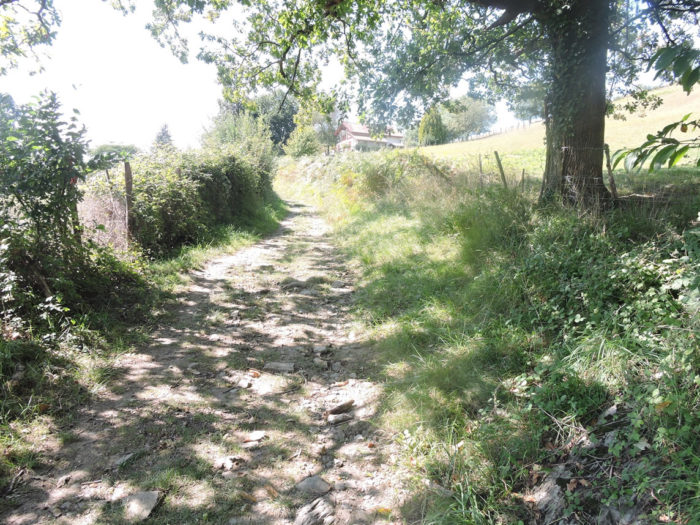 |
| Further on, the pathway widens. |
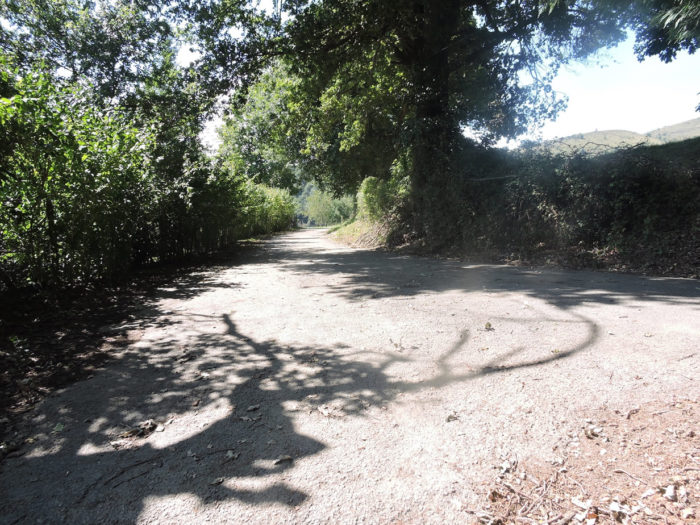 |
 |
This region is above all a series of meadows stuck in the cramped nature of the plain. On the hills, there are only forests, no sign of human presence.
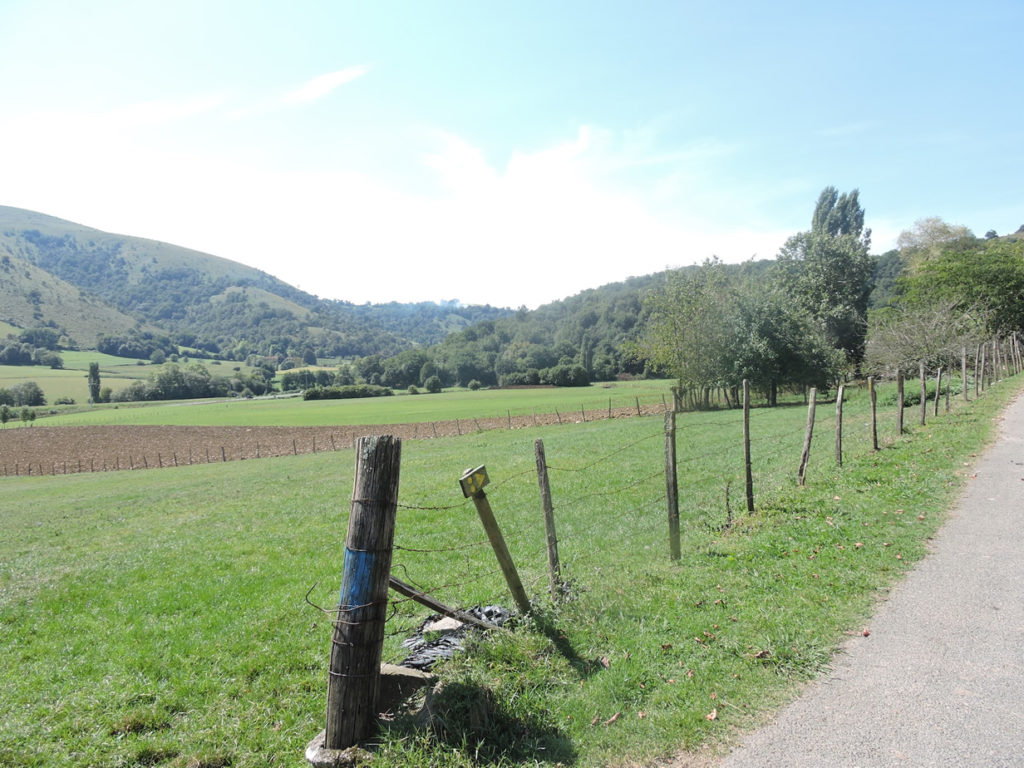
| Soon, the pathway heads to Bastida Choko, with the charm of Basque residences again and again. |
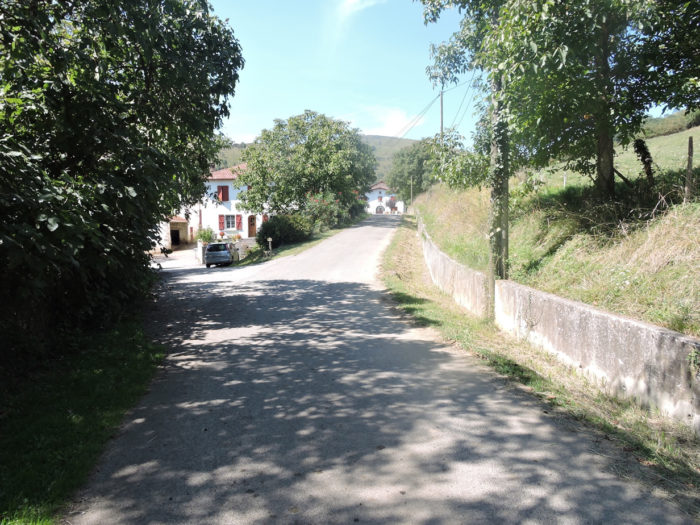 |
 |
| It then descends into an undergrowth, where the small Arlako brook flows. Small streams cross here the valley to flow into the Bidouze River. |
 |
 |
| Further on, the pathway gradually approaches the main road, at the edge of the undergrowth, |
 |
 |
| The GR65 will then take a strip of dirt and grass above the departmental road. Traffic is sometimes a little heavier on the axis, it is still the axis which connects St Jean Pied-de-Port to St Palais. However, you are not crossing a populated region of the country. |
 |
 |
| The strip of grass follows the road and runs near Utziat. There was here in the Middle Ages a priory-hospital, where “donats”, exercised, these lay people who assisted the prior to help the poor and take care of the pilgrims, who can still be found in Haranbeltz. The road has finished disrupting a village which has melted down over time. All that remains on this side is the mill which remains on the side of the road. |
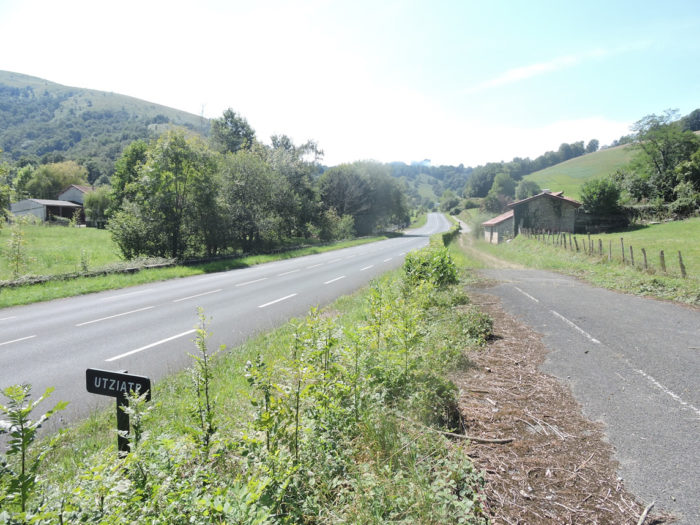 |
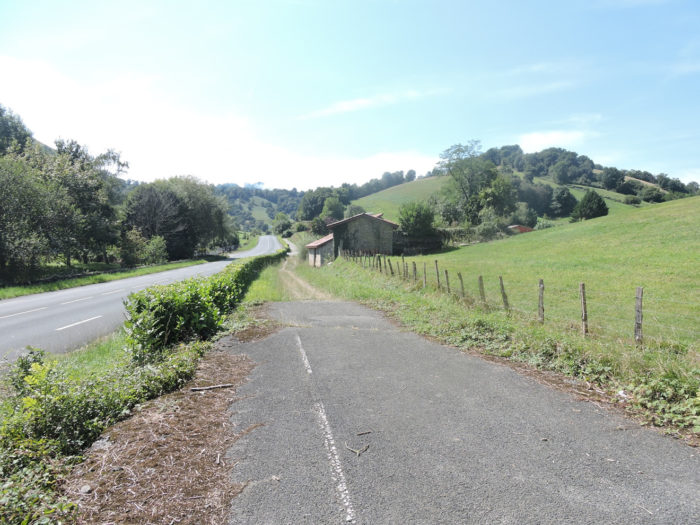 |
| Don’t think these buildings are just for bats. Many less fortunate pilgrims will find shelter there for the night. |
 |
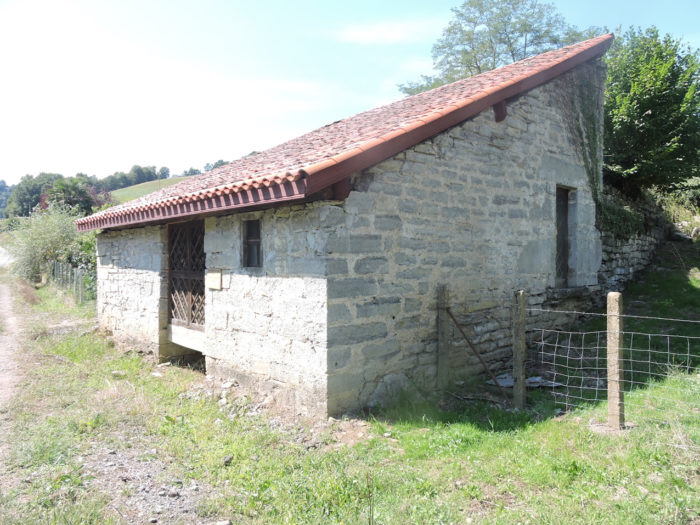 |
| The GR65 then follows a small road which deviates a little from the main road to return to it a little further on. You are here a little over 3 hours walk fo St Jean-Pied-de-Port. |
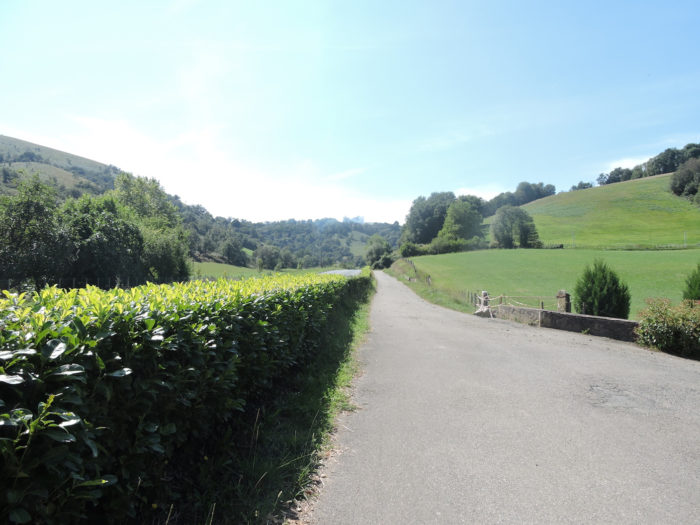 |
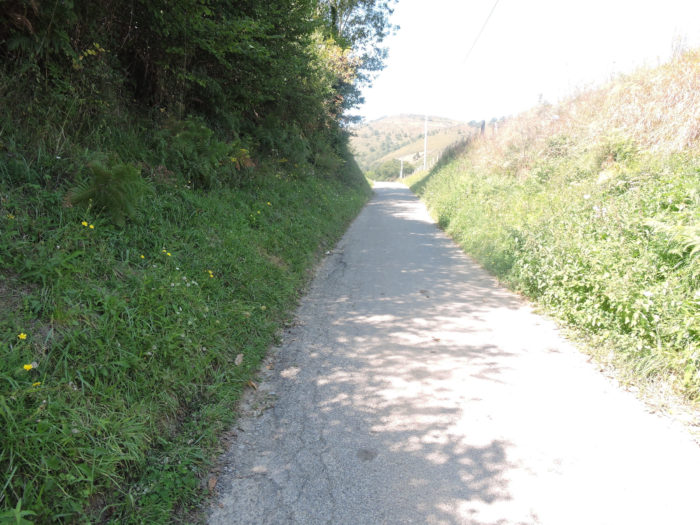 |
| It is a narrow lane that runs alongside the road, passing a little undulating above it, uphill, at the edge of the oak undergrowth. |
 |
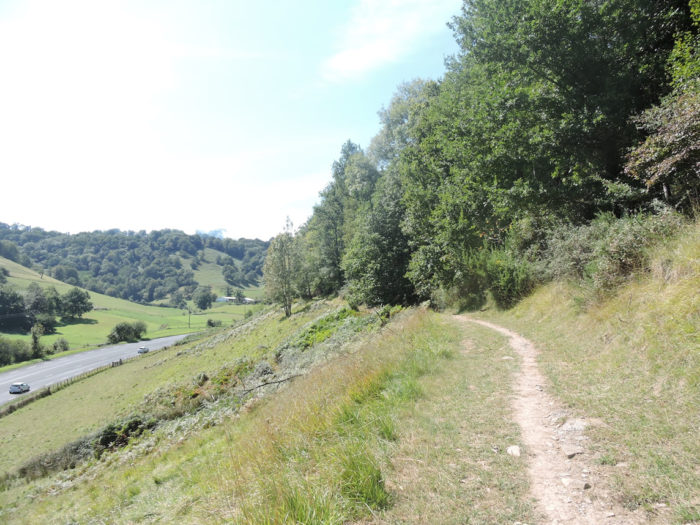 |
| There are even vines here. And yet, Basque wines are not a wine bastion. You find it a little further down, near St Jean-Pied-de-Port, in Irouleguy, which produces a very elegant and confusing white wine (but also red), much sought after by connoisseurs. This vineyard is closely linked to pilgrimage. In fact, it was created by the monks of Roncesvalles, for a wine intended for pilgrims of the time. At that time, people knew how to pamper lost pilgrims with wine and Armagnac. |
 |
 |
| Further up, the GR65 joins the departmental road. |
 |
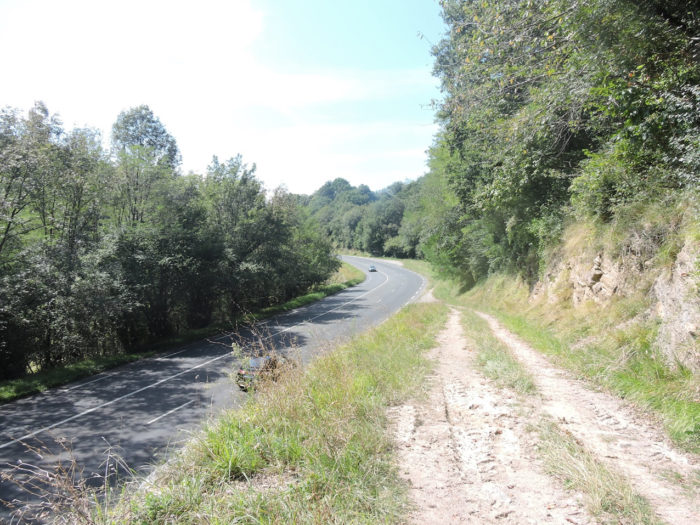 |
Section 3: A large cross in the Basque countryside.
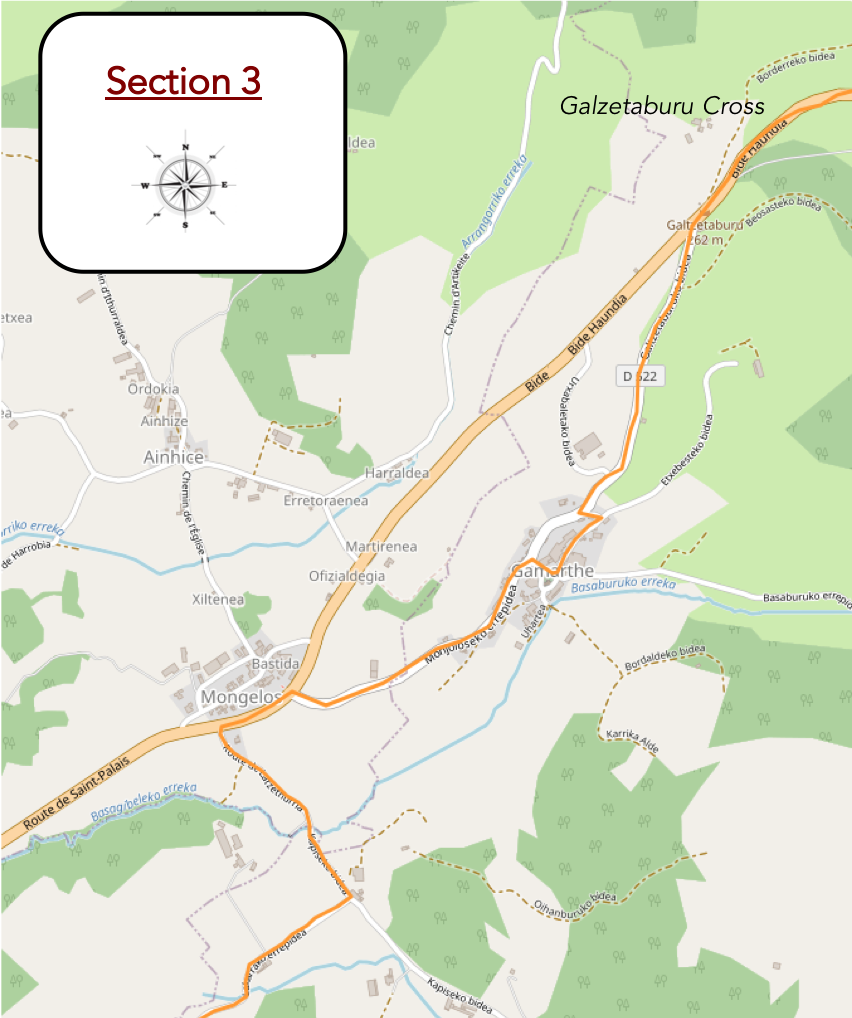 General overview of the difficulties of the route : course without great difficulty, except the climb to Galzetaburu Cross.
General overview of the difficulties of the route : course without great difficulty, except the climb to Galzetaburu Cross.

| You must then follow the road next to the cars. Fortunately, these journeys alongside road traffic are quite rare on the Camino de Compostela. The road climbs quite steadily to Galzetaburu Cross, a sort of small pass. |
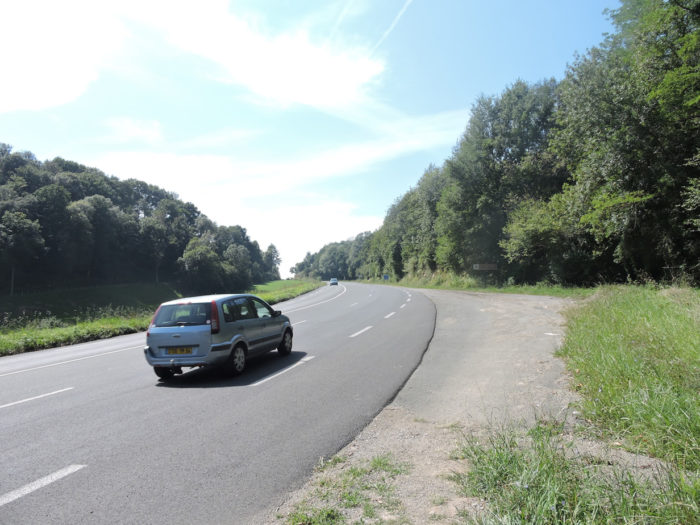 |
 |
Here stands the large stone cross of Galzetaburu, with its small pebbles that the pilgrims have deposited with their customary devotion. We will say that Christ is not the most stylish.

| The GR65 crosses the road, passes next to a small farm, where you can taste excellent cheeses or sheep’s yoghurts. Today, the red-headed Manech doze off behind the wild grass. The yogurts will only be better for it, no doubt. |
 |
 |
| The road then descends gently at first, then more steeply on Gamarthe. |
 |
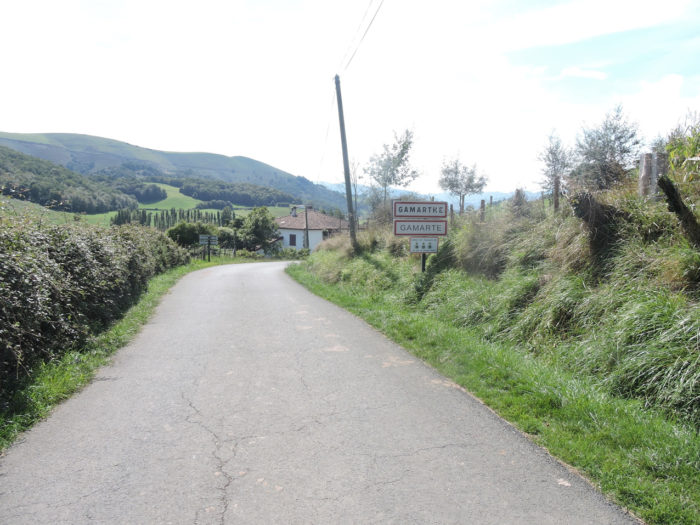 |
| In Gamarthe, a tiny village of a hundred inhabitants, a certain activity revolves around the organic farm, where it smells of charcuterie. At least, behind the walls of a large food complex at the bottom of the village, the engines are humming. |
 |
 |
| Until St-Jean-Pied-de-Port, you will most often walk on the road. Here the road leaves Gamarthe and heads towards Mongelos. |
 |
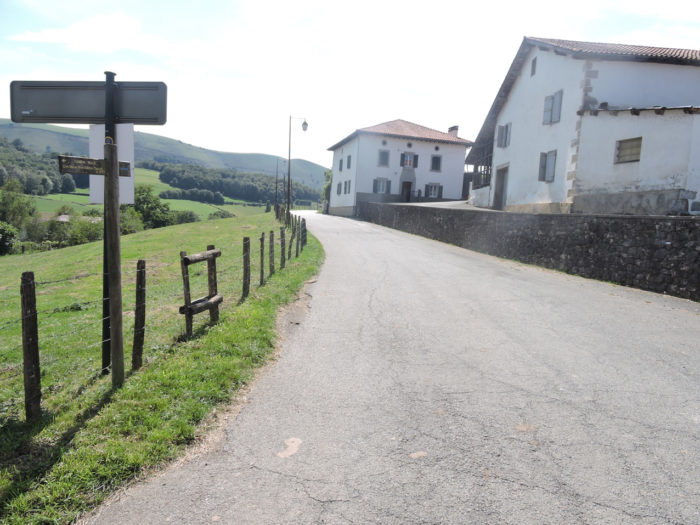 |
| It is an essentially agricultural country where industries are absent. At the end of the straight line, the road arrives on the D933 large departmental road, near the village of Mongelos. |
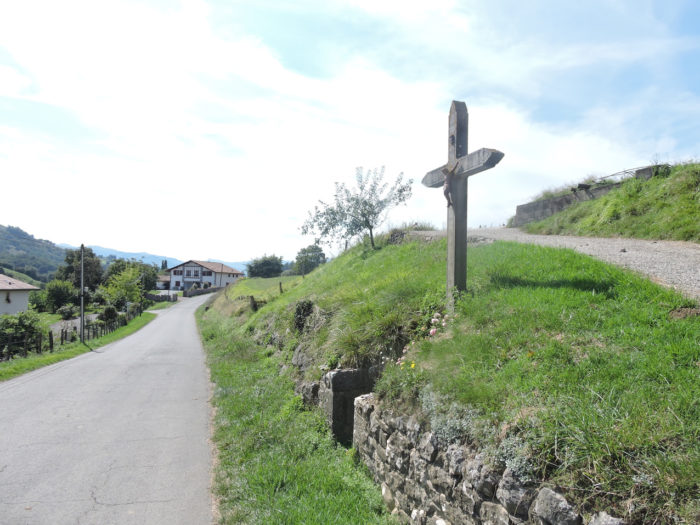 |
 |
| Yet, GR path does not go to the village, on the other side of the road. It continues for a few hundred meters along the D933 road, on a strip of grass, as is customary on larger roads. Here the traffic is more present than on many roads which also bear the name of departmental road in France. |
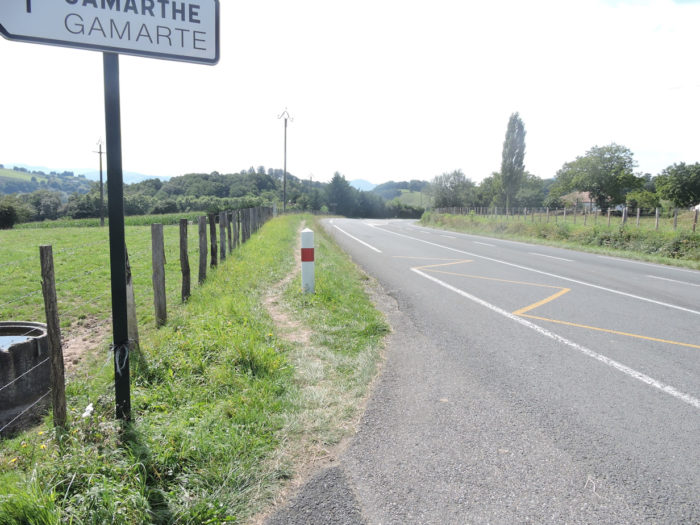 |
 |
| Shortly after, the GR65 leaves the axis for a small road which will cross the country until St Jean-le-Vieux on the side of the hill. There are mostly meadows, so to speak, but few frolicking animals. But corn has become scarce. Is it because the duck is not being raised around here or the soil is not suitable? |
 |
 |
| And to make us lie, the poultry must be raised, to see the grain silo and the barracks, shortly after passing Basagibeleko Erreka brook. Here the names of the streams hum gracefully. |
 |
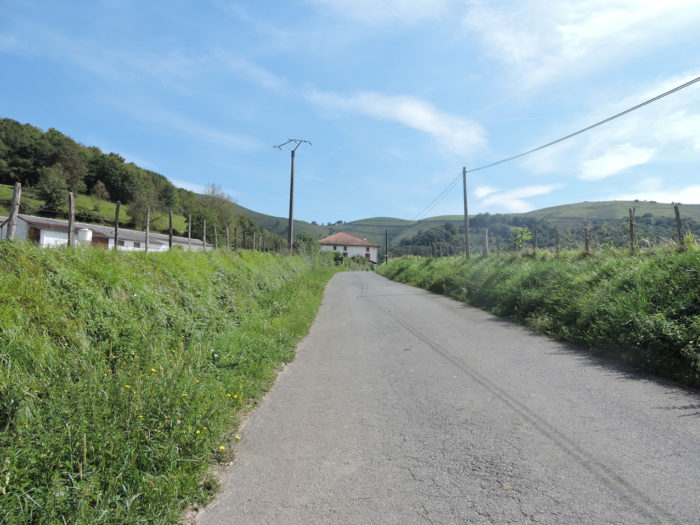 |
| A house by the side of the road, and this is Biscaya hamlet. In France, one house is sometimes a hamlet, two houses a village. You will no longer be surprised by the huge number of municipalities in the country. The road continues in the countryside. |
 |
 |
Section 4: All the French Compostela routes meet here.

General overview of the difficulties of the route: ups and downs near Bussunarits.

| The road almost always flattens or smoothens until you find Tosca brook, undoubtedly very useful for the peasants who cultivate corn here. |
 |
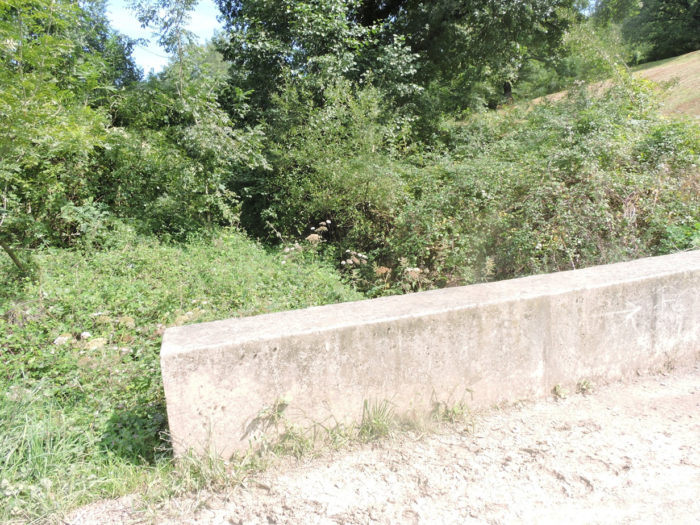 |
| Further afield, the GR65 makes a part of the road with the stream. |
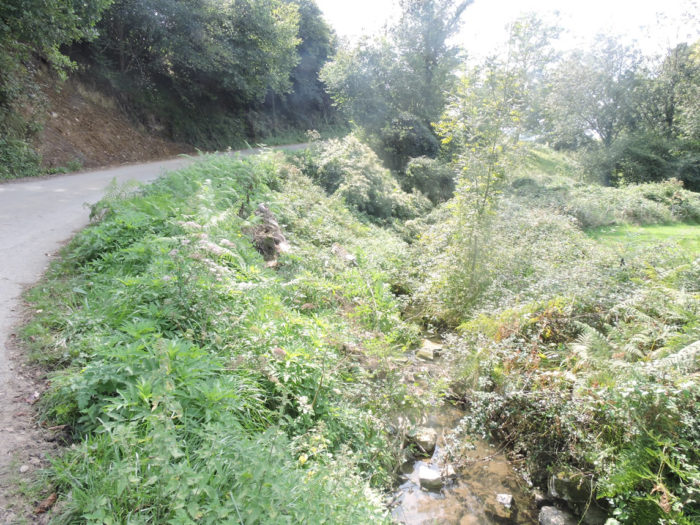 |
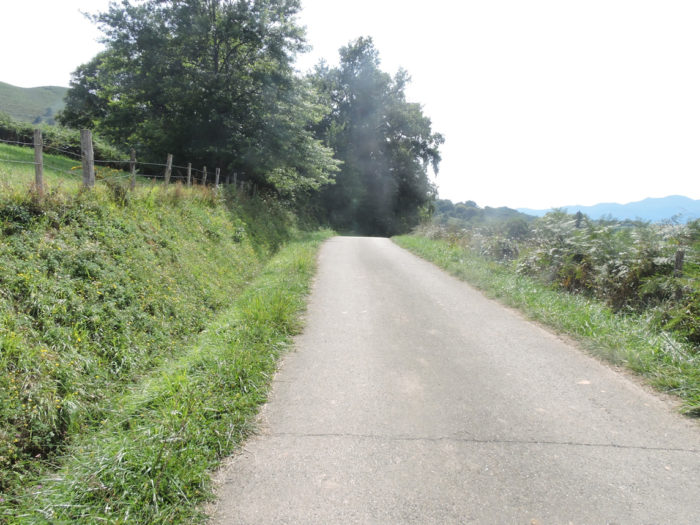 |
| The road soon arrives at the beautiful Basque farmhouse of Larralde Borda, where you can stay. |
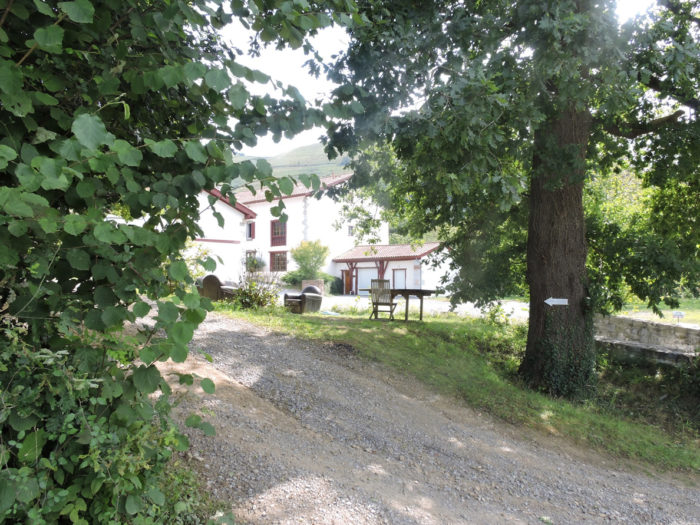 |
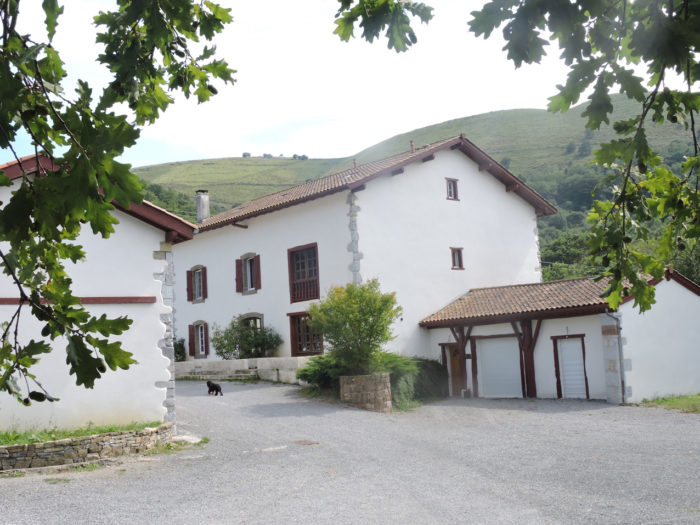 |
| Then the road will undulate between meadows and scattered undergrowth for kilometers. Motorists are warned that there are walkers on the road, perhaps Sunday quad enthusiasts, who have a circuit not far away, because vehicles are rare here. |
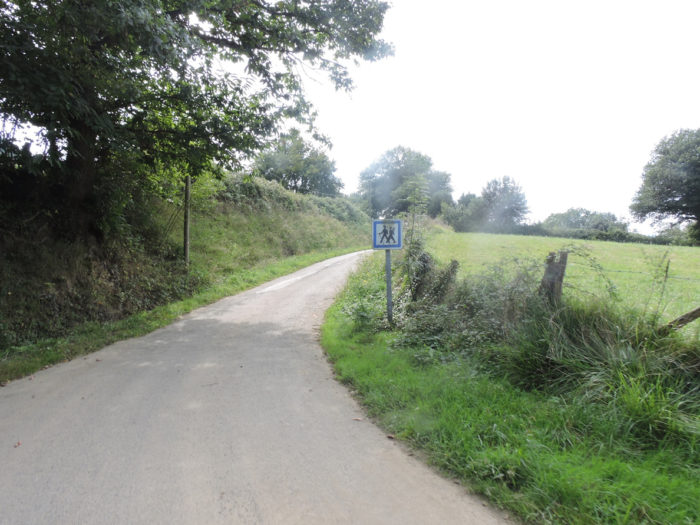 |
 |
| In this part of the country, where walking is easy and relaxing, the corn crops are more discreet than the green meadows. You’ll see more horses than cows in the meadows. |
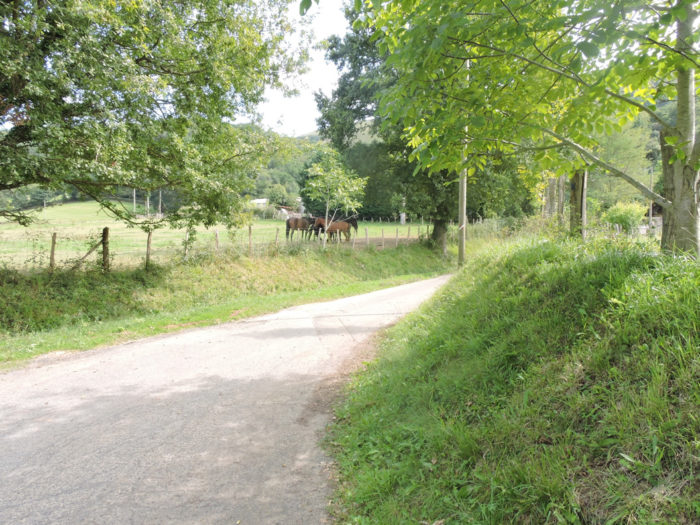 |
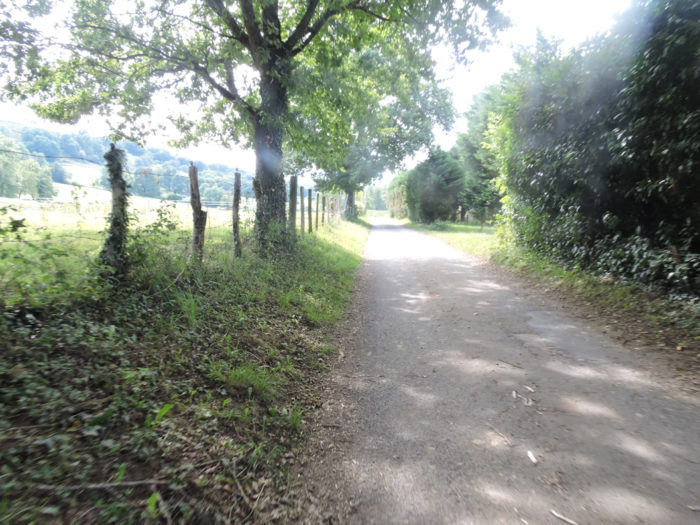 |
A sign announces Château Harispe in Lacarre, a manor house. Pilgrims will not visit this mansion, as it is not on the way. Besides, what could they do there? The manor house, a listed property, has just been bought by Spaniards.

| The road thus continues from one meadow to another from one grove to another. In the region, the oaks have sometimes left a little space for the large chestnut trees. |
 |
 |
| The road runs again near Tosca stream. In front of you, you can see the village of Lacarre in the distance, but you cannot see the manor. |
 |
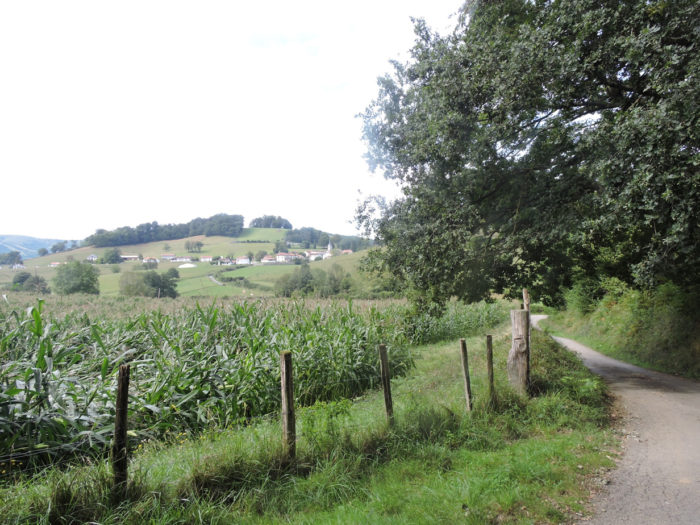 |
| Anyway, the road does not go there. It just follows the side of the hill, away from the village, first on the edge of an undergrowth. |
 |
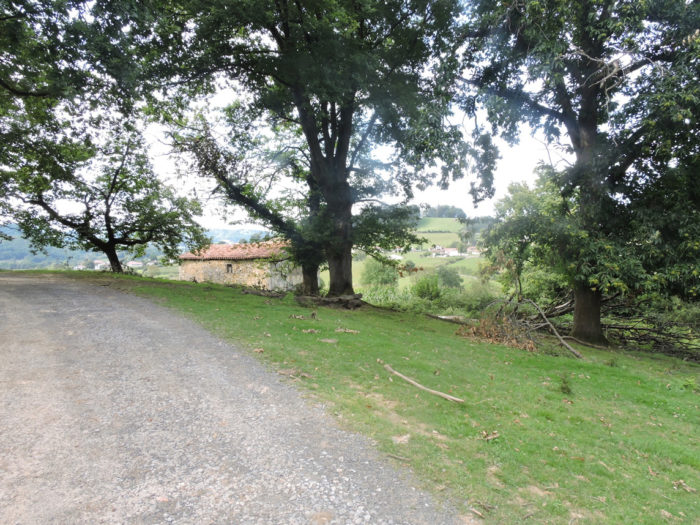 |
The landscape is sometimes bucolic in the region, but not always. Here the Basque Country exudes its charm.

| Then a bad road sways a little more on slight oscillations. |
 |
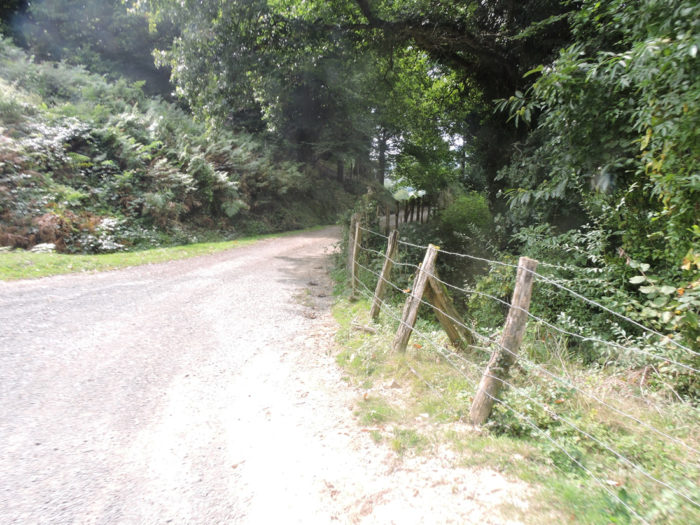 |
| Further afield, the country opens up a little more to the meadows when the road arrives near the departmental road, but does not go in Harizpéa. |
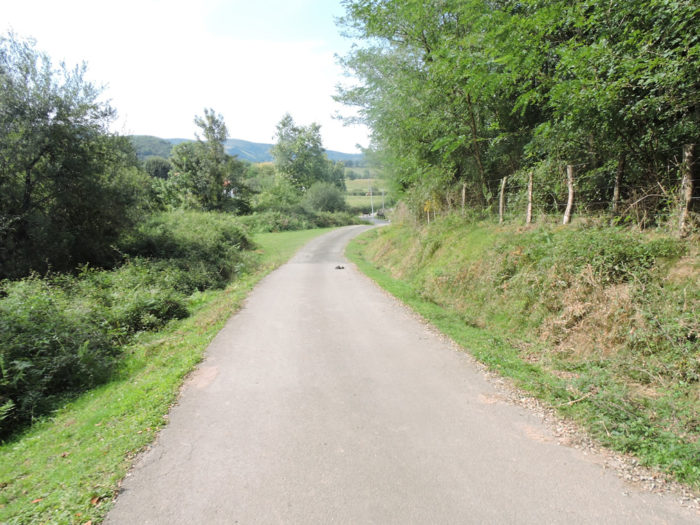 |
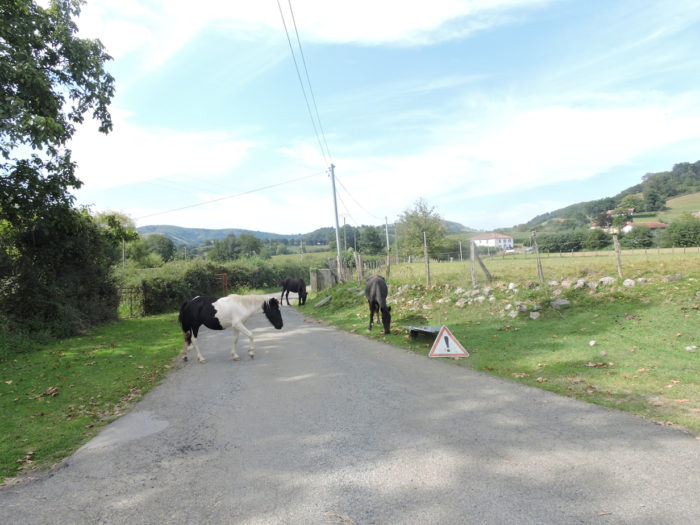 |
| The Way of Compostela has another program for you, namely climbing for a kilometer on the hill, probably to give a little sweat to the pilgrims who are stiff from flattening in nature. |
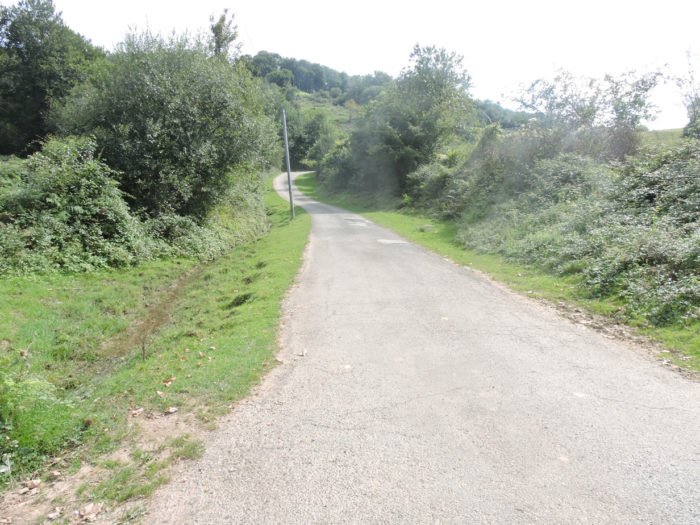 |
 |
| This is the direction of the Oyhanzarre pass, where the GR78 comes from, the Santiago route coming from Piedmont. |
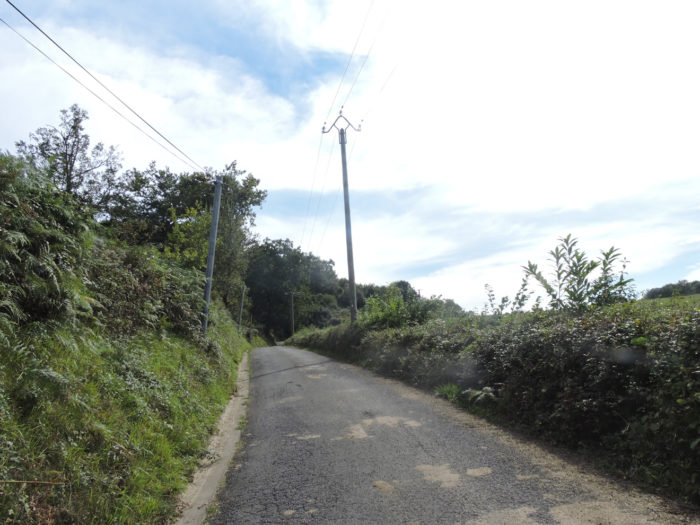 |
 |
| The road climbs in two stages, sometimes with slopes greater than 15%, in the wild vegetation. |
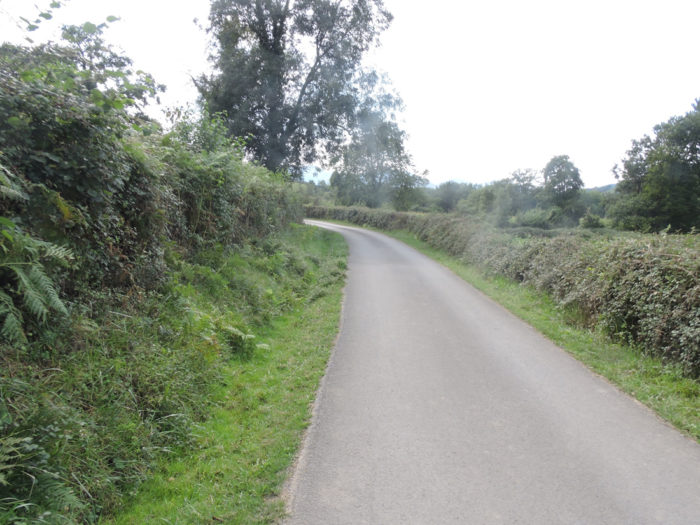 |
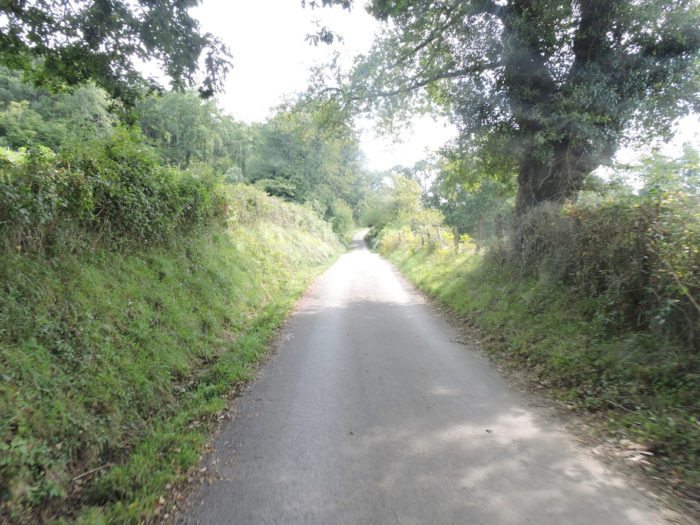 |
| Further up, it is the junction between GR65 and GR78 which comes from northern Italy and Arles. You can guess that the pilgrims who came from the Mediterranean had a difficult pass to cross. Now almost all the pilgrims coming from the east have gathered to walk to Spain. All that is missing is a track that will join the Camino Francés coming from Italy shortly before Punta la Reina, in Spain. |
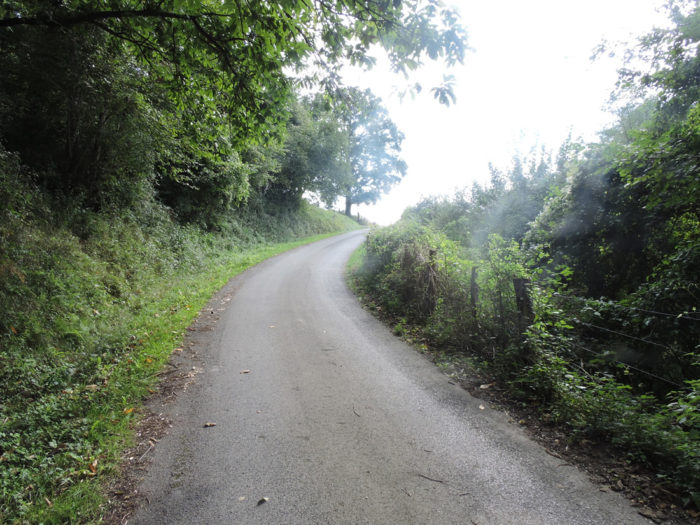 |
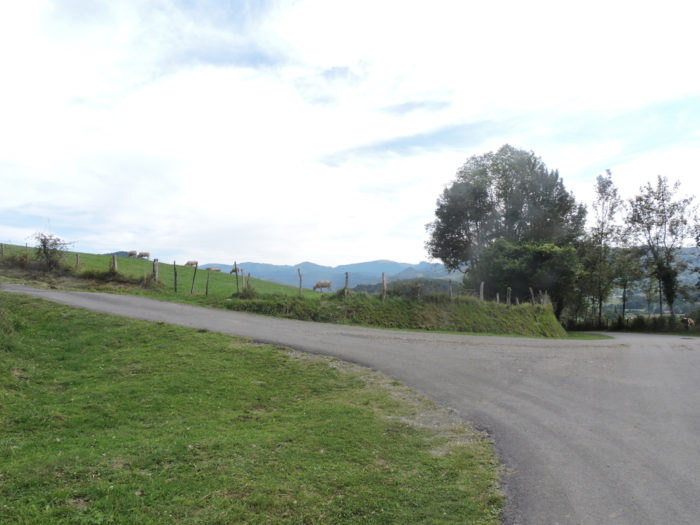 |
| The road then slopes down into the meadows under the trees, as steep as the climb. |
 |
 |
| Further down, it crosses the wild stream of Buzunaritzeko Erreka under the ash trees. |
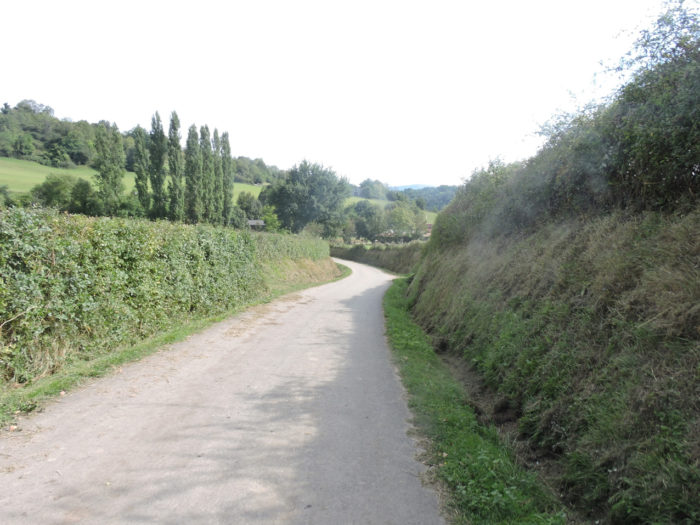 |
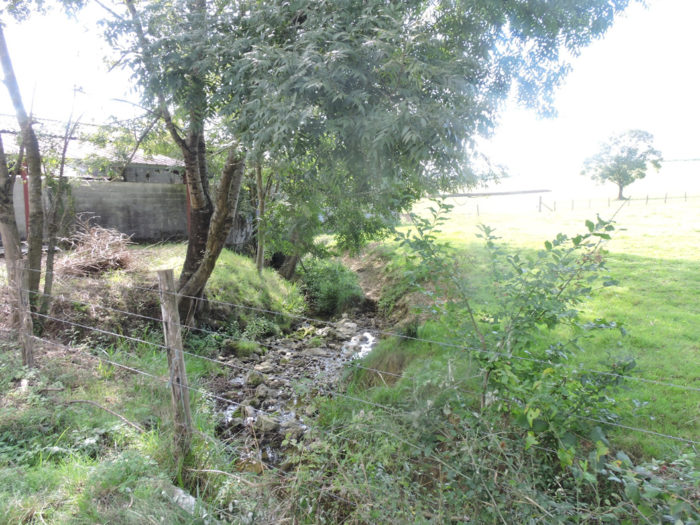 |
Section 5: Walk in the Basque countryside.
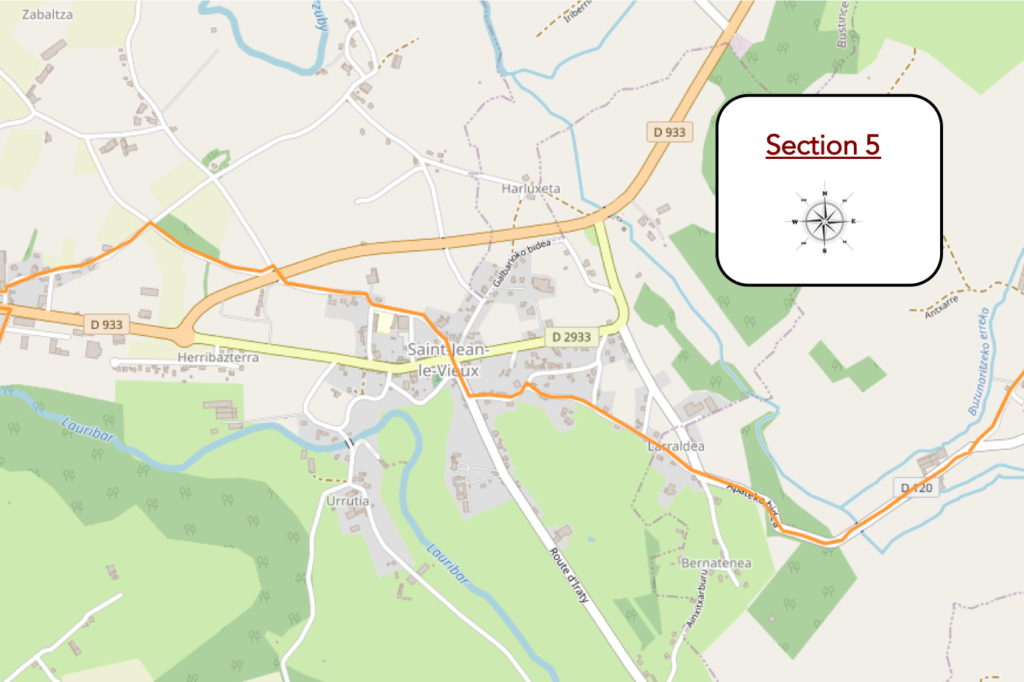 General overview of the difficulties of the route: course without any difficulty.
General overview of the difficulties of the route: course without any difficulty.
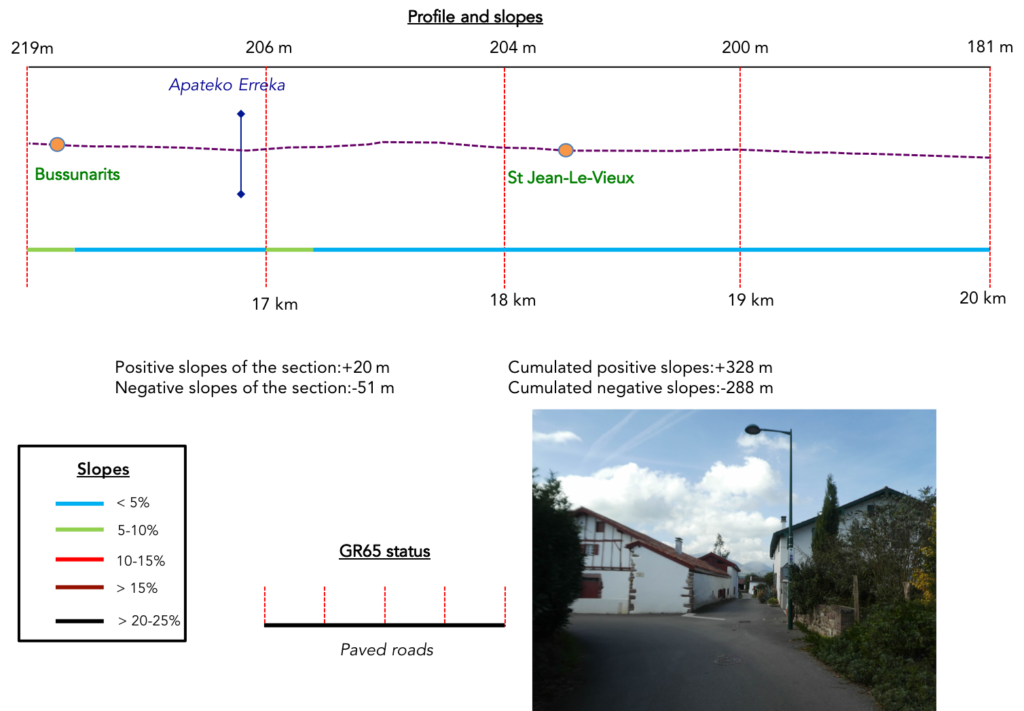
| You’ll soon arrive in Bussunarits, where there is also food and accommodation. Perhaps you’ll find one of those improvised stops, where on the benevolent lawn a charming lady has a very welcoming refreshment bar. |
 |
 |
| The road then descends beyond Bussunaritz. |
 |
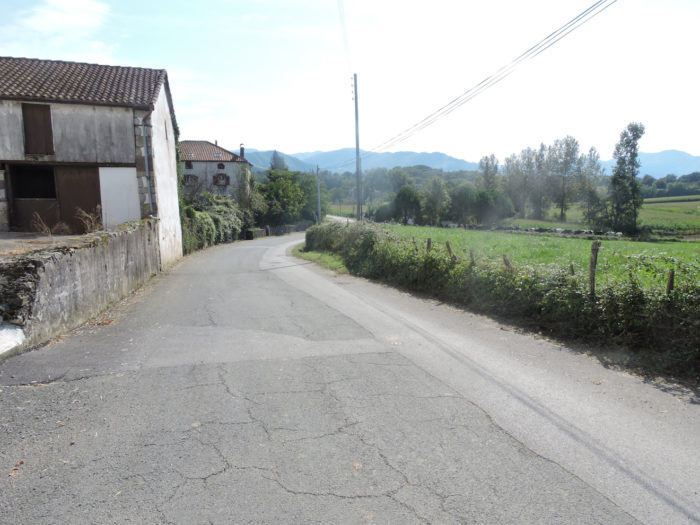 |
A very beautiful Christ finds a little balm in the ivy.

| Here it is again the countryside, with corn and cows. |
 |
 |
| Further down, the road runs near Aphat Castle, which is not a real castle when viewed from the road. In deep France, people like to baptize every beautiful and large residence with a chateau. The road will then follow the big Apateko brook. |
 |
 |
| Further on, the road crosses the stream, almost a small river. |
 |
 |
| Then a wide road climbs gently in the leafy trees towards St Jean-le-Vieux. |
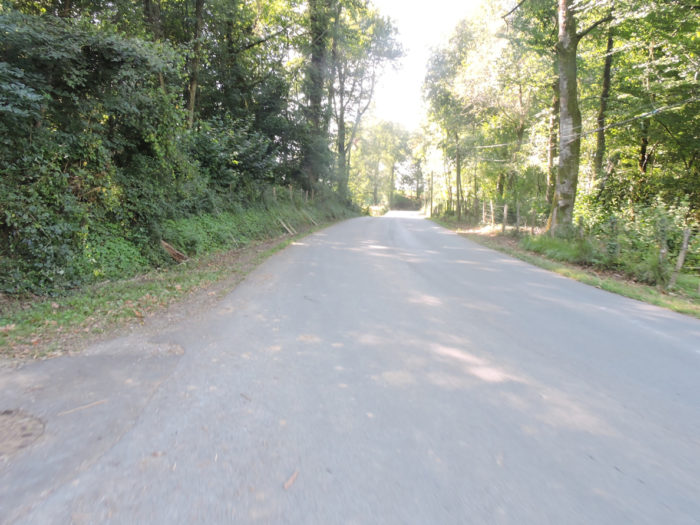 |
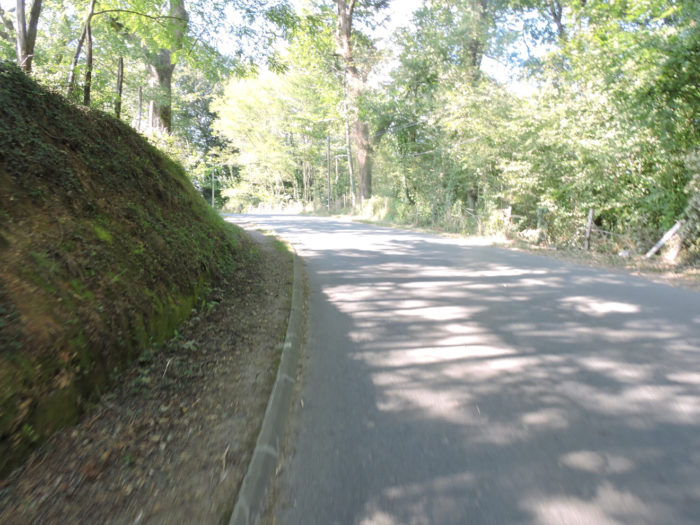 |
| Here, the peasants seem to prefer Holstein cows to White Aquitaine cows. The road then gets towards the first houses of St Jean-le-Vieux. |
 |
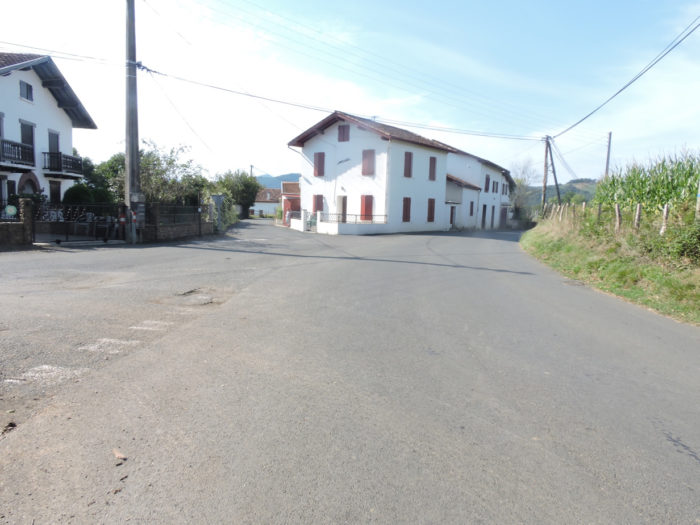 |
| In front of you stand the Pyrenees, so expected and feared both by pilgrims. |
 |
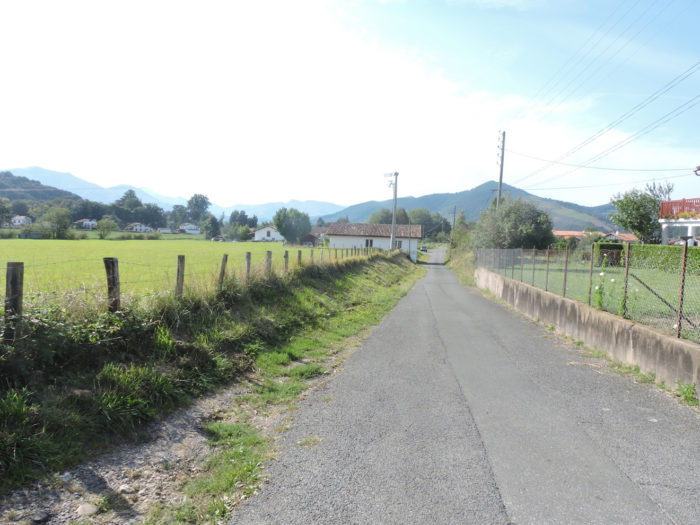 |
| The road then progressively reaches the center of the village, passes in front of the St Pierre Church dating back to the 12th century, restored in the 17th century. |
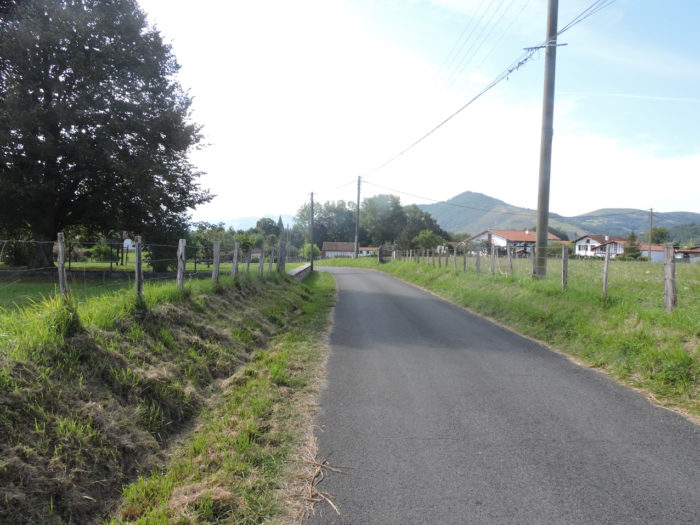 |
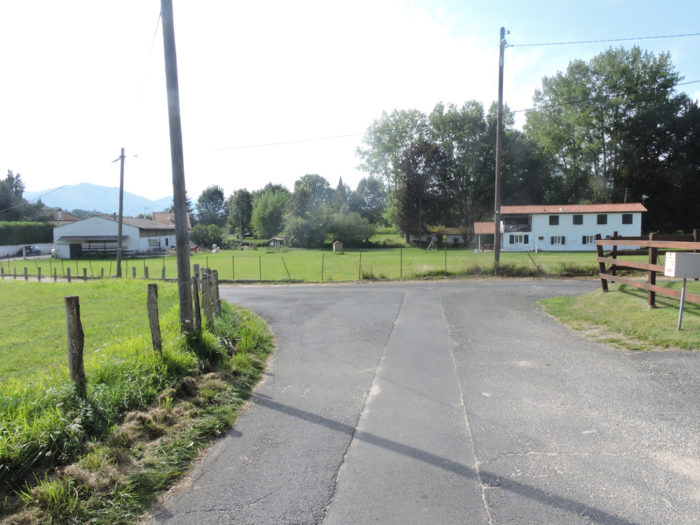 |
| You can stay and eat in the village. |
 |
 |
| Beyond St-Jean-le-Vieux, GR path will dawdle a bit in the countryside and the suburbs, not far from the D933 departmental road. It leaves the village and immediately enters the countryside. |
 |
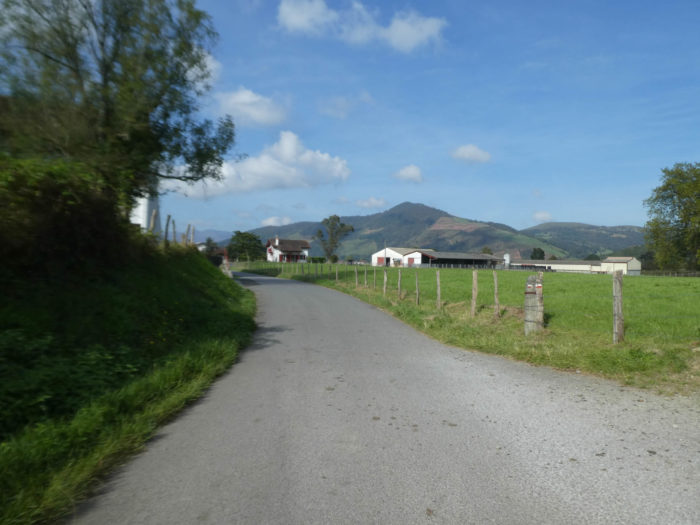 |
| The road crosses the meadows between the rare farms and the Basque villas. |
 |
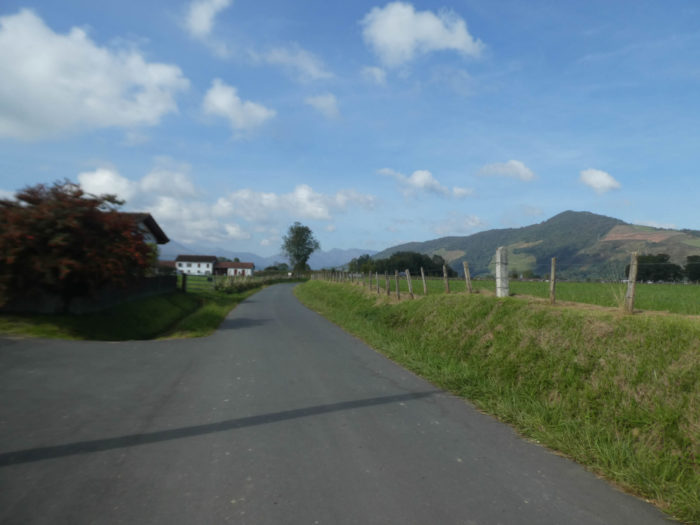 |
| Shortly after, it passes under the very busy departmental road which heads towards St Jean-Pied-de-Port. |
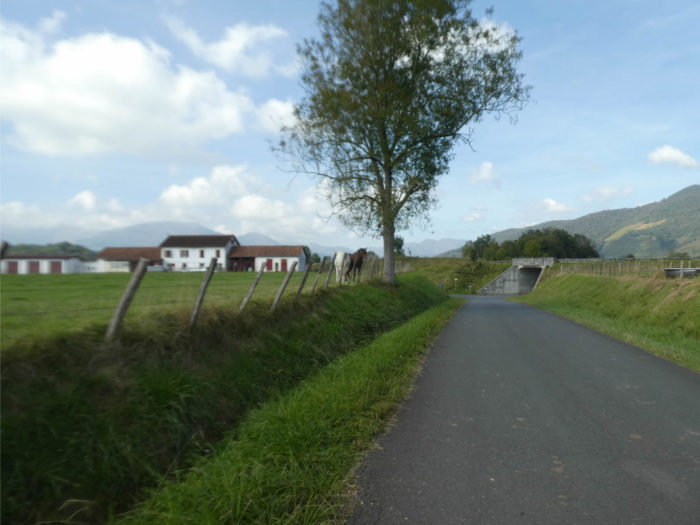 |
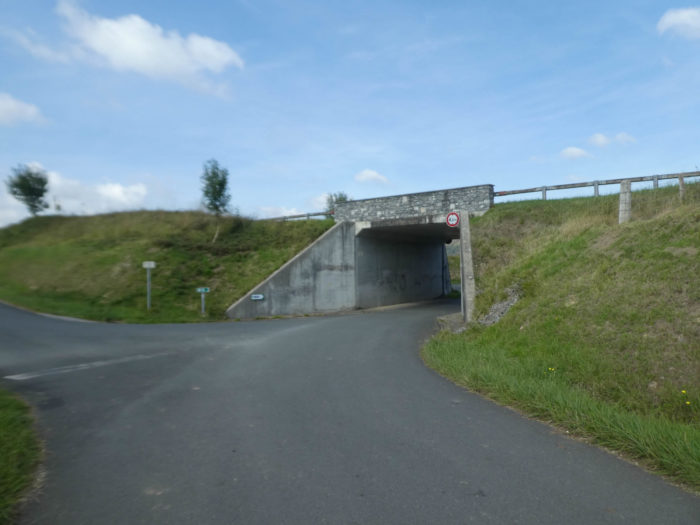 |
| Beyond a small undergrowth and a crossroads, it returns to the departmental road. |
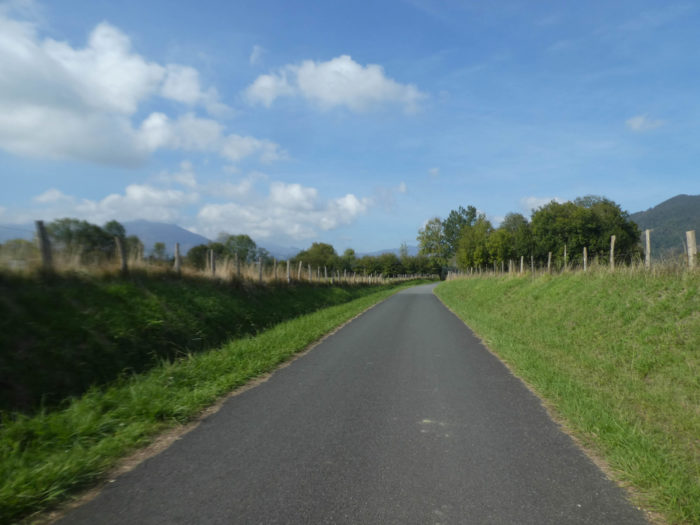 |
 |
| You’ll cross the charming little village of Herribazterra, on the edge of the departmental road. |
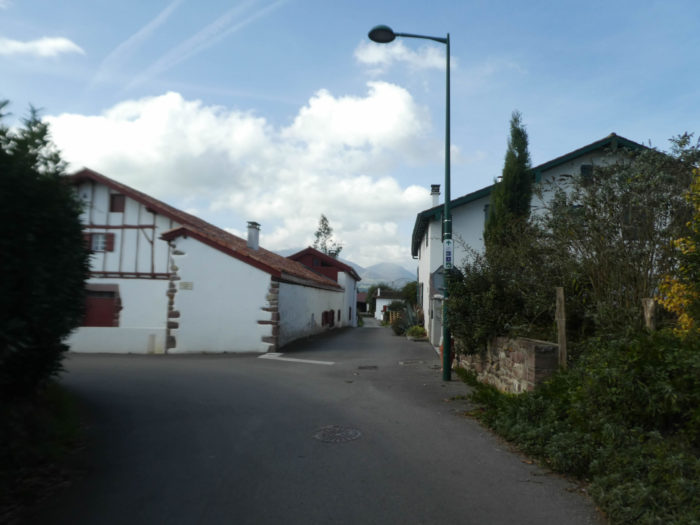 |
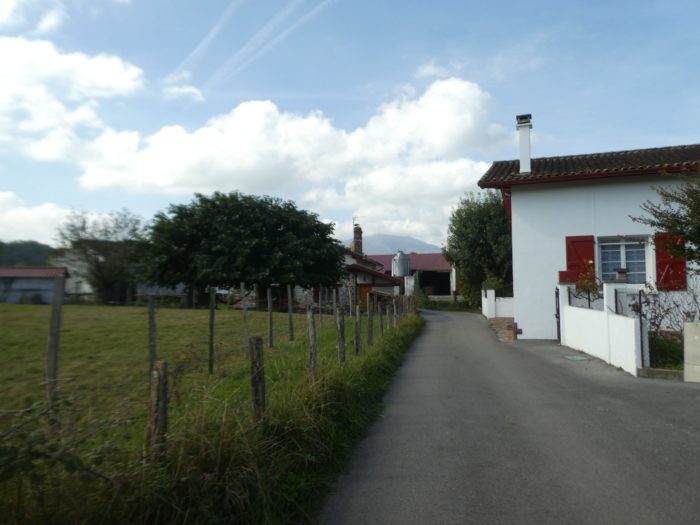 |
| There, the GR65 plays a very complex little game to end up on the other side of the departmental road. |
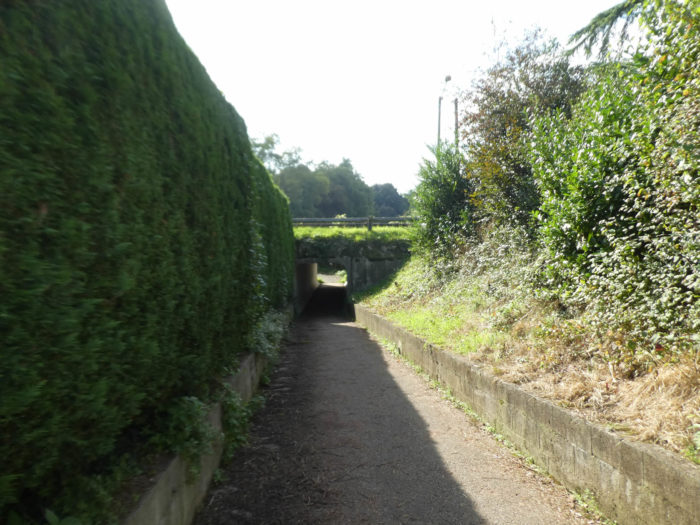 |
 |
Section 6: Towards St Jean-Pied-de-Port, at the end of France.

General overview of the difficulties of the route: course without any difficulty.

| After crossing the departmental road, the GR65 takes the road towards La Madeleine, under the plane trees. |
 |
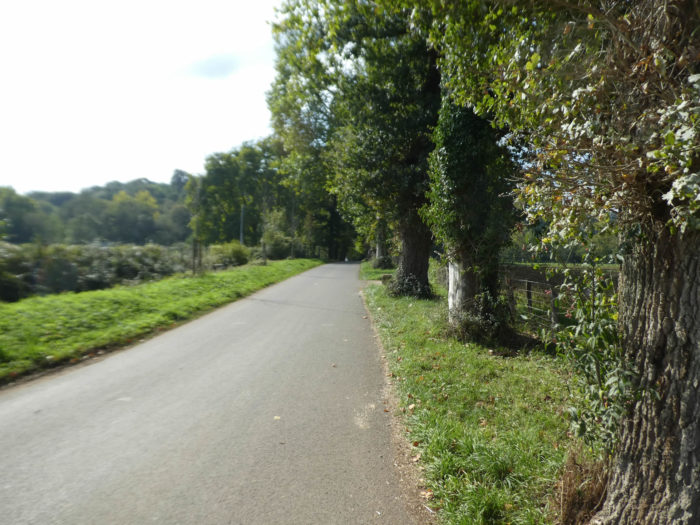 |
| La Madeleine, you cannot miss it with the number of signs along the road. |
 |
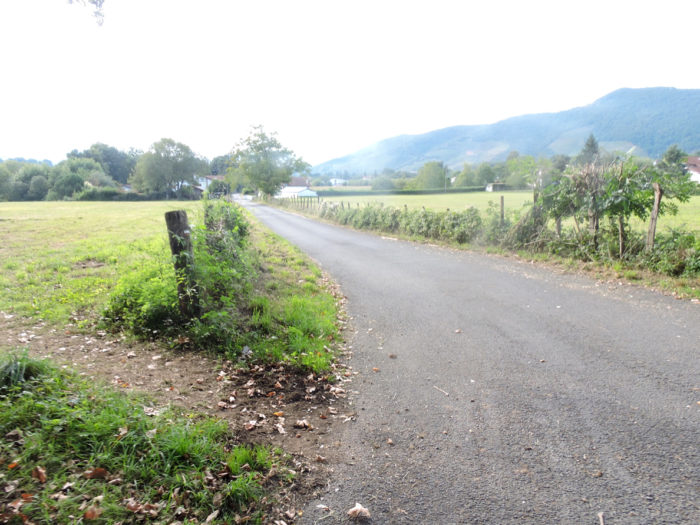 |
| Quickly, the road reaches housing estates of Basque houses that have almost a whole family resemblance. Paint companies that manufacture red tint should have no shortage of work here. |
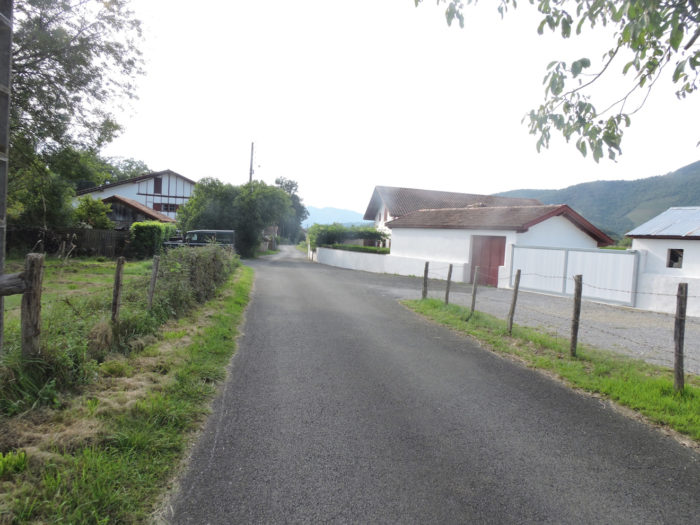 |
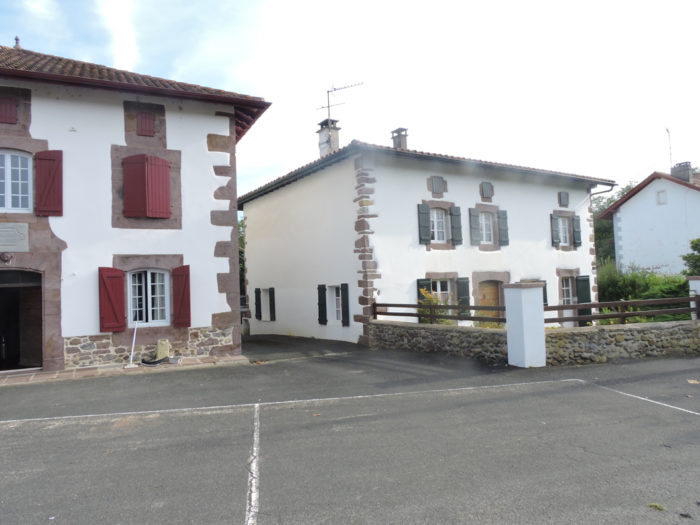 |
| The church, which appeared in the 14th century, was the chapel of a priory founded by the Premontresians. This set, linked to the pilgrimage route, also included a hospital. None of this remains. The bell tower, originally a bell tower, was transformed into a tower preceded by a porch in the 19th century. The view of the whole is unattractive, with its cemetery a bit out of place. Next to the church, the prior’s house is a beautiful Navarrese residence which may have succeeded the former hospital where sick pilgrims came to pray to St. Madeleine. |
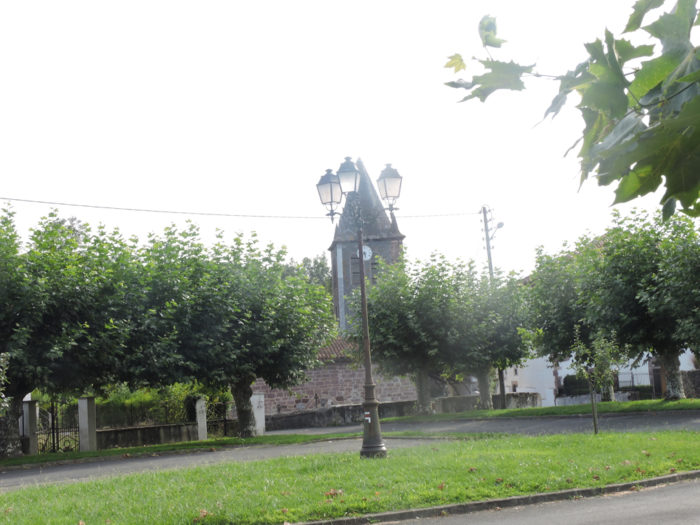 |
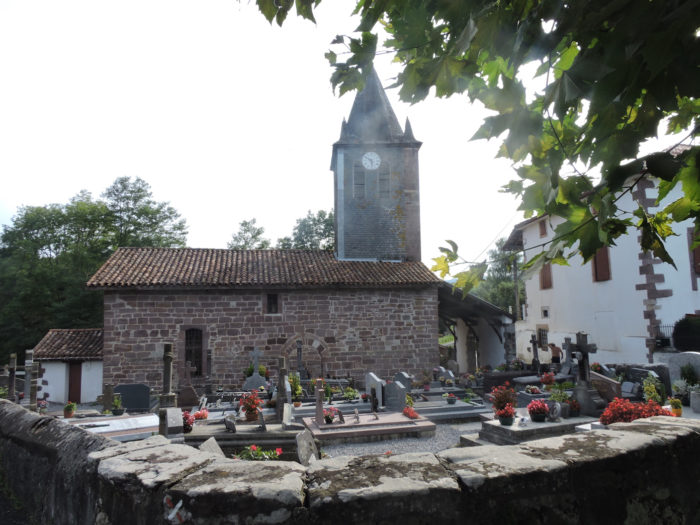 |
More beautiful is the immense stone cross in the small park.

| Beyond La Madeleine, the GR65 crosses the Lauribar, the river that bathes the small plain,to St Jean-Pied-de-Port. |
 |
 |
| The road then plays a little with the river or the small streams in the countryside. |
 |
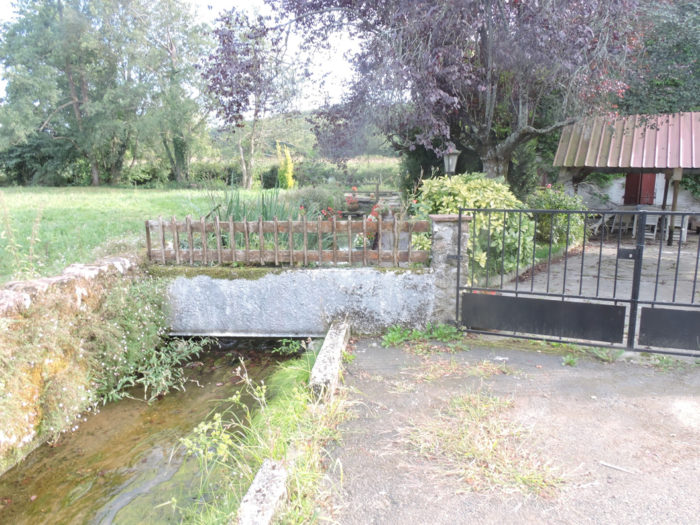 |
| Here is the corn back, perhaps the last to be seen in France, alongside the peasant houses that line the road. |
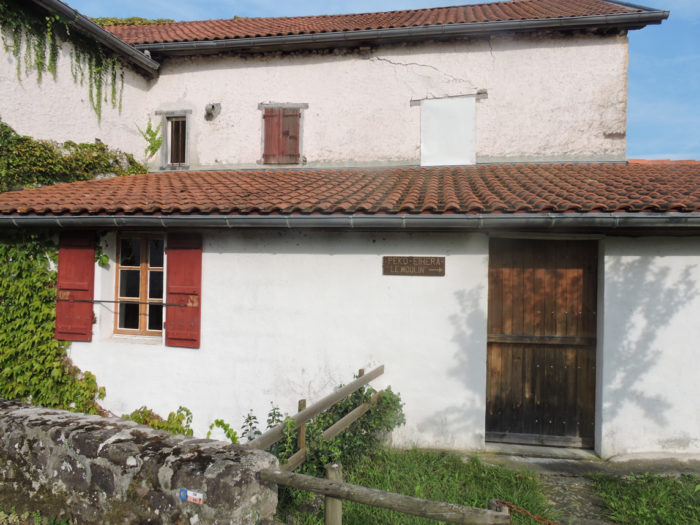 |
 |
| A little further on, the road returns near the river. |
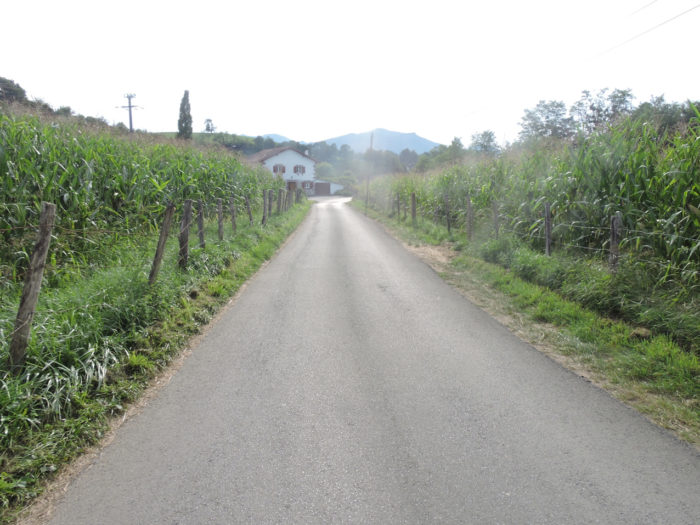 |
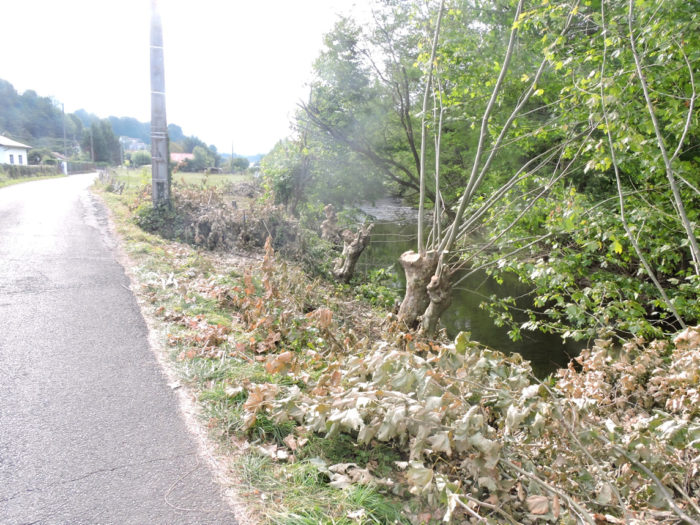 |
| Near Taillapalde, a small stream runs along the edge of the road. You are a stone’s throw from St Jean-Pied-de-Port and the accommodation is announced, because there are many there. |
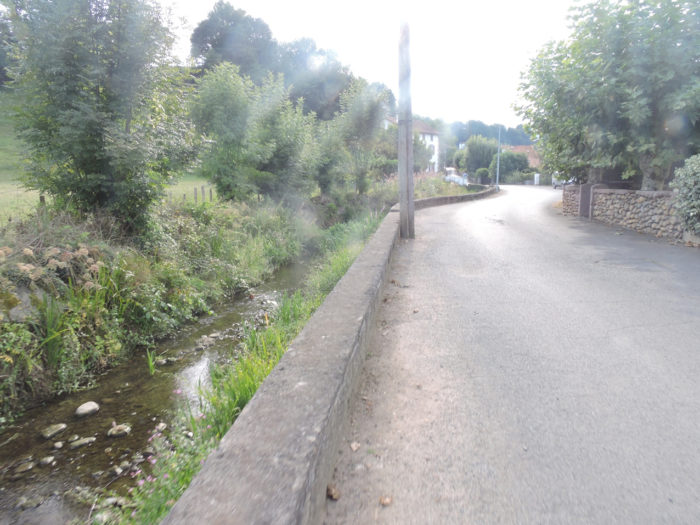 |
 |
| A little more countryside, and the view opens onto the plateau of St Jean-Pied-de-Port. |
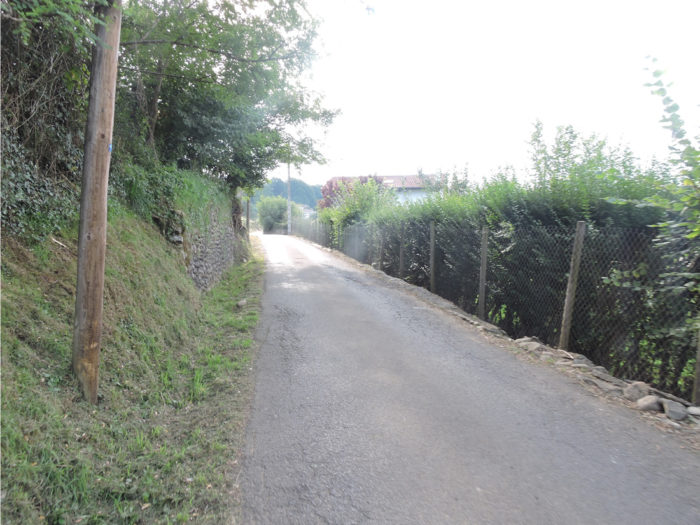 |
 |
| Then the road climbs a little more to remind the pilgrim that tomorrow it will be Roncesvalles, and the road arrives near the citadel. |
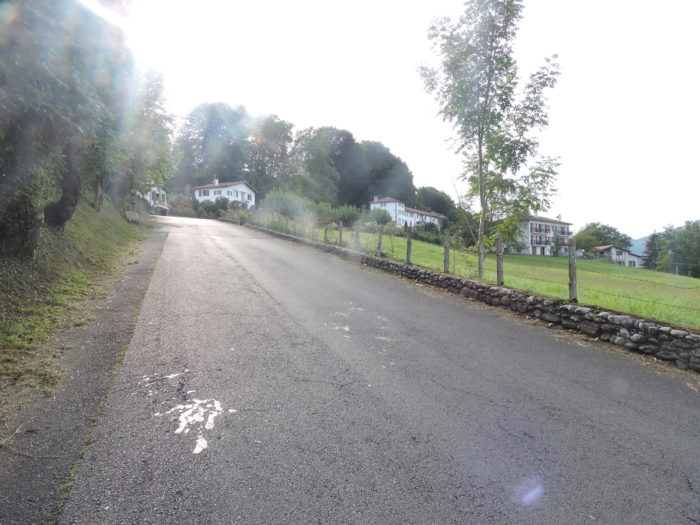 |
 |
| The road arrives in St Jean-Pied-de-Port at the top of Rue de la Citadelle, at the foot of the fortress. |
 |
 |
| You’ll enter the city through Porte St Antoine, open in the ramparts. What a shock when you walk through the door! You haven’t met virtually anyone all day, and you land in a buzzing beehive, a real crush. You will try to make your way through the crowd of pilgrims leaving for Roncesvalles and tourists. |
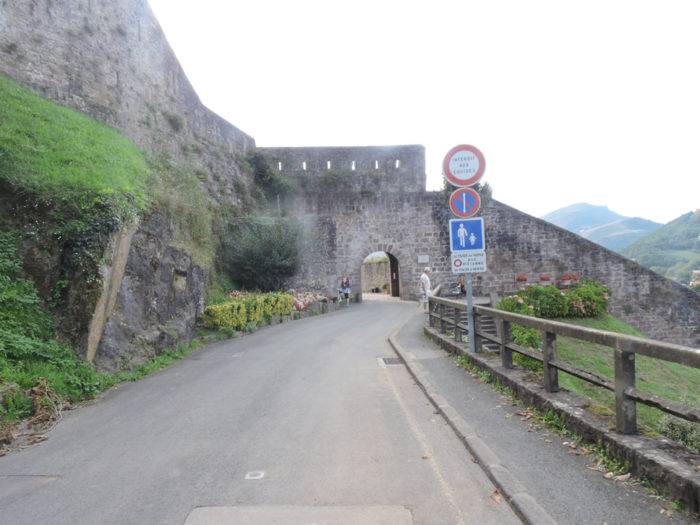 |
 |
Section 7: In St Jean-Pied-de-Port.
| Pilgrims flock to the pilgrims’ office for information or to find accommodation, for those who have forgotten to book. And they are many. It’s really an absurd idea to believe that the Camino de Compostela only begins in Roncesvalles. |
 |
 |
| The Rue de la Citadelle is black with accommodation for pilgrims, of all categories, although the simple gîte is the most represented accommodation. There are no luxury hotels in the town. |
 |
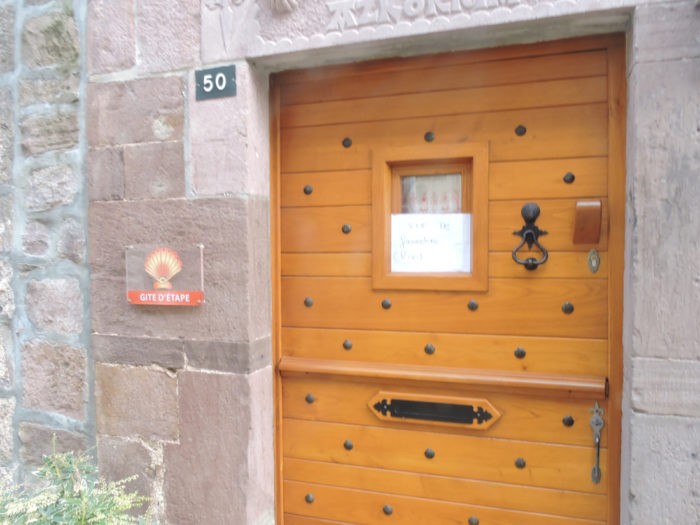 |
| The houses on this street are remarkable. The street also offers many shops. Even the mannequins in front of the shops look like pilgrims. |
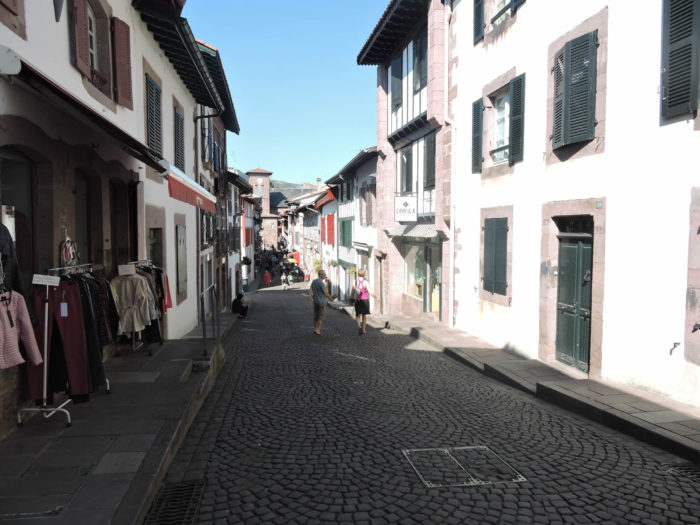 |
 |
| The Nive River flows through the middle of the village. The Notre Dame gate near the bridge is open in the church steeple. Above the door is a Madonna and Child. The door opens onto Rue de la Citadelle on one side and Pont Notre Dame on the other. There is nothing Roman about the bridge, also known as the Roman Bridge. It is a bridge from the Middle Ages, restored in the 17th century. The atmosphere here is remarkable. The Rue d’Espagne, on the other side of the Nive bridge, is less frequented by tourists. It is from this street that the traxck starts again towards Roncesvalles. |
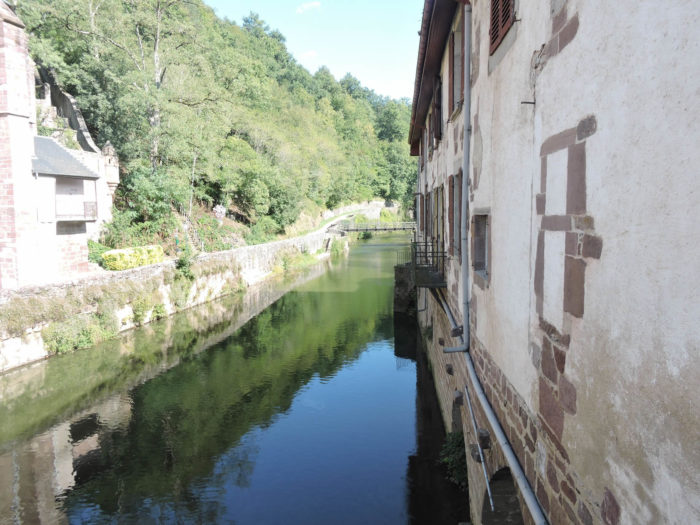 |
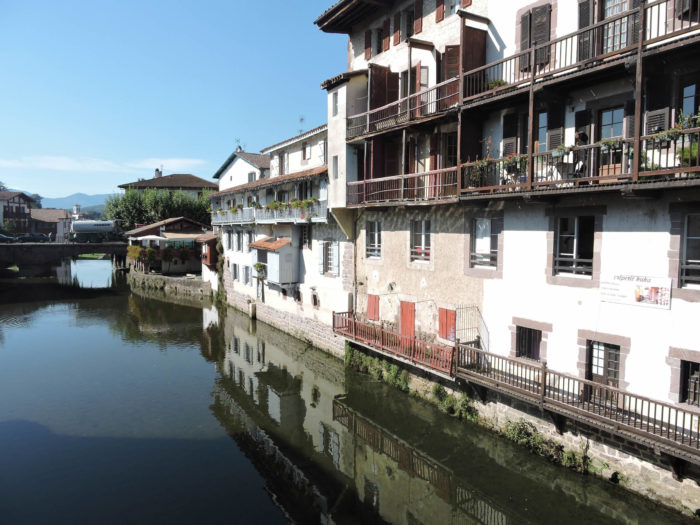 |
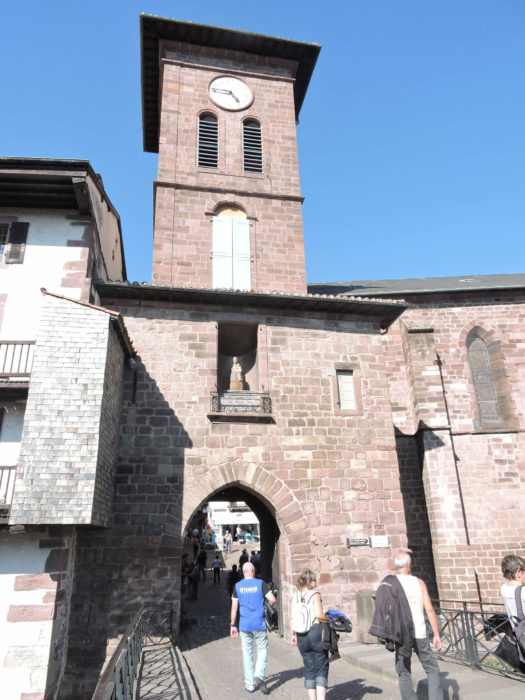 |
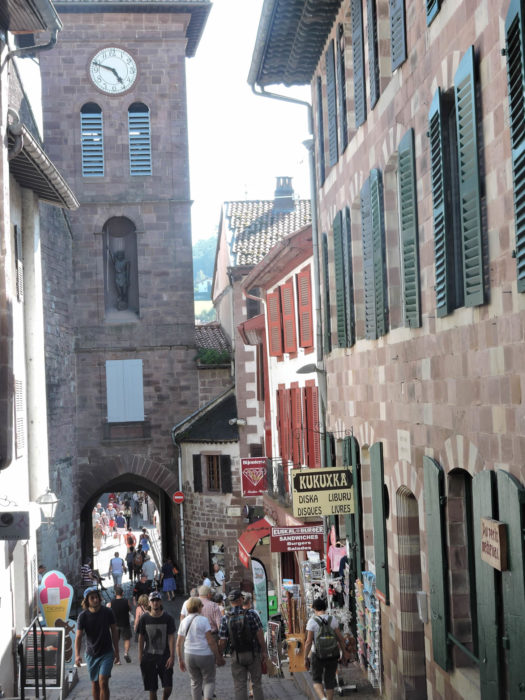 |
| Let’s not forget that the village was at a moment of capital importance for part of Navarre. We will tell you the whole story in detail as we’ll cross Spanish Navarre. The citadel of Mediguren dates from the XVIIth century. It was changed a little later on the advice of Vauban. It is accessed by a ramp. The fortress, now occupied by a college, cannot be visited. But, you can walk on some of the bastions and the covered ways, where the panorama on the city is interesting. |
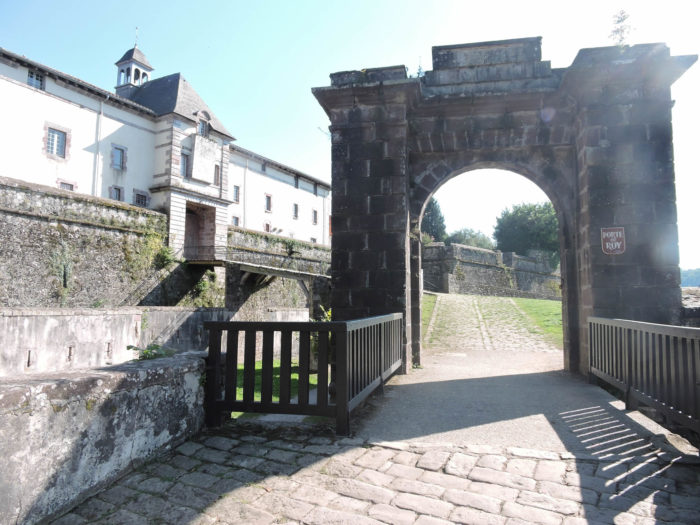 |
 |
Of all the stages of Via Podiensis, this is where there is the most accommodation available. Even more than in a fairly large city like Cahors. And despite this, due to the density of pilgrims and tourists, some find it difficult to find accommodation, due to not having booked in advance.
Many French pilgrims will often not walk further than here. But the others will continue overwhelmingly. Have a nice trip to Spain.
Lodging
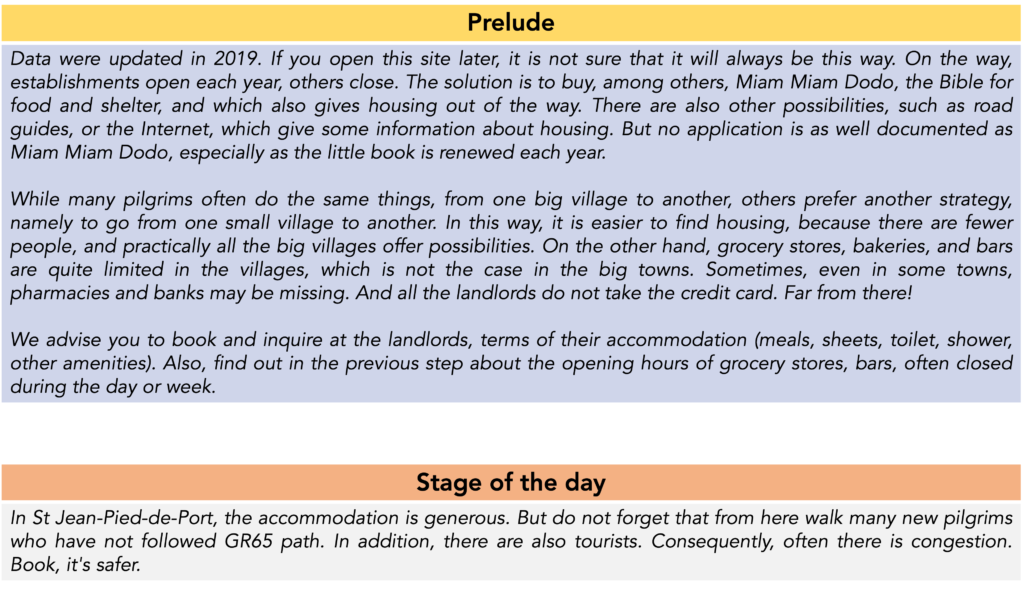
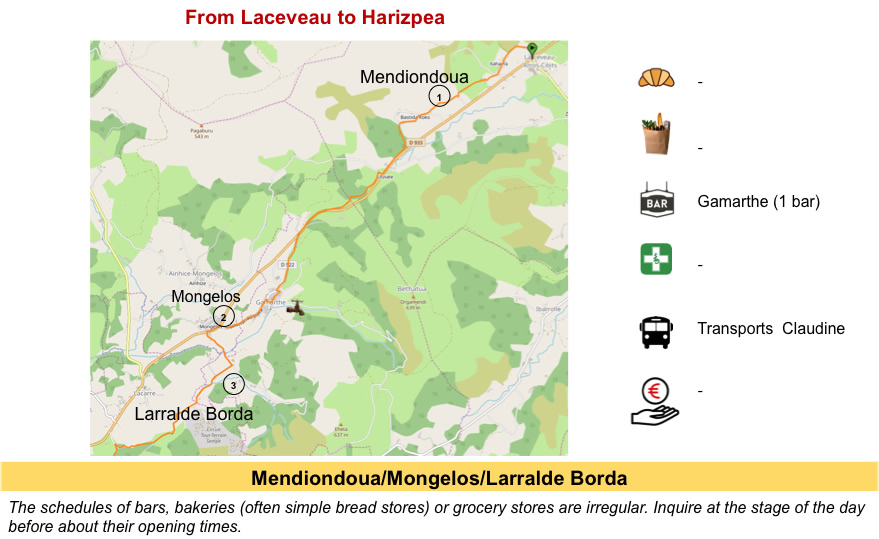
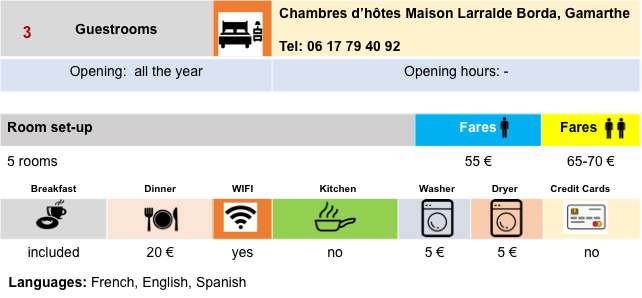


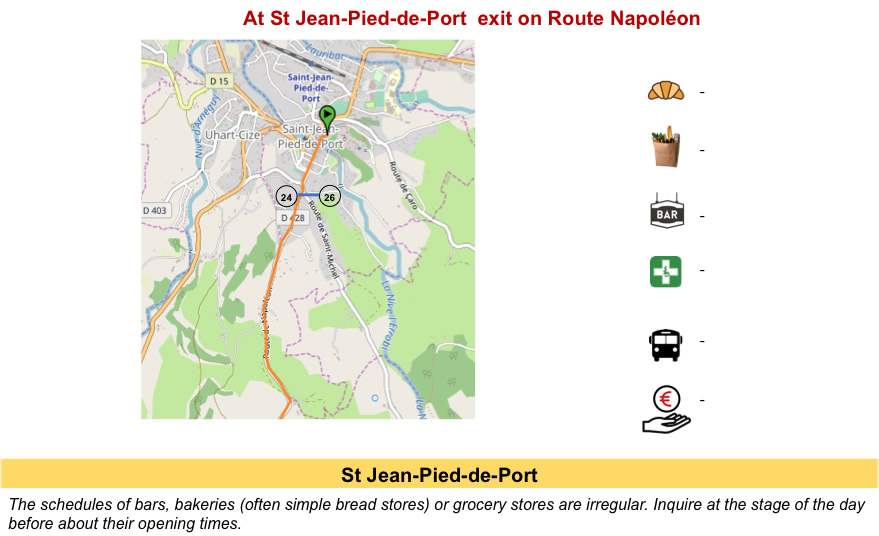

Feel free to add comments. This is often how you move up the Google hierarchy, and how more pilgrims will have access to the site.
|
 |
Back to menu |












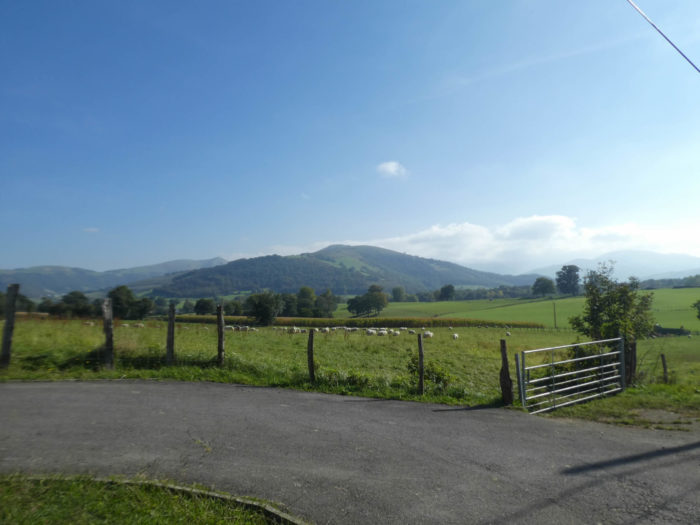
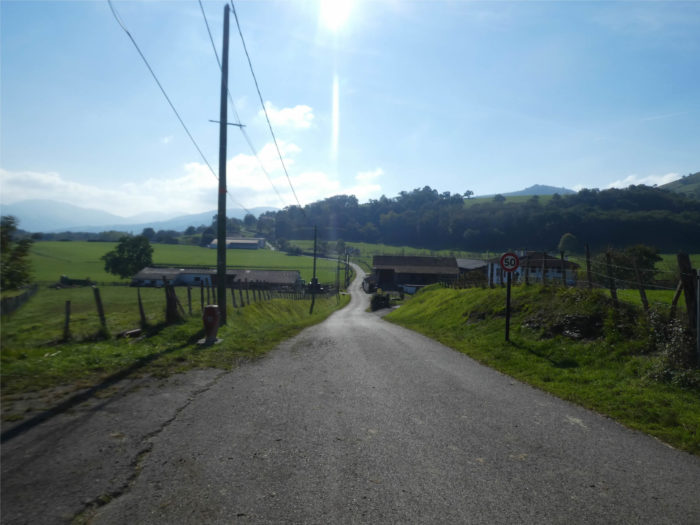
























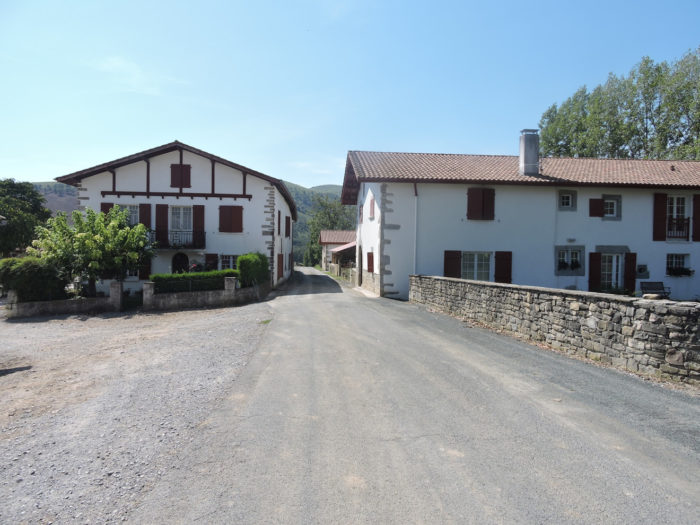
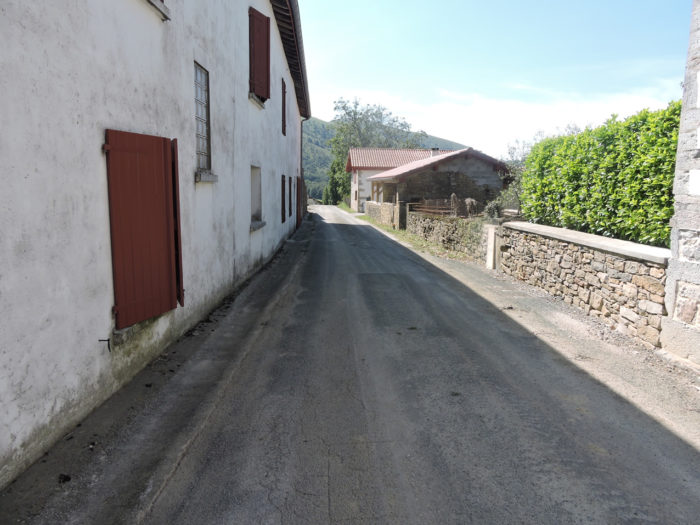





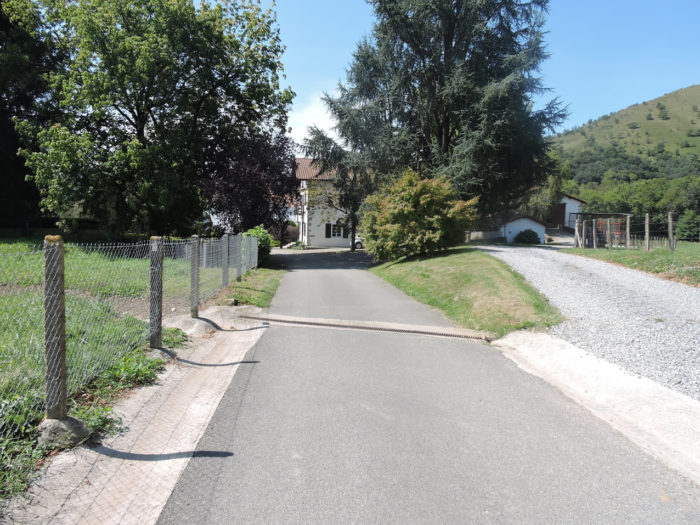







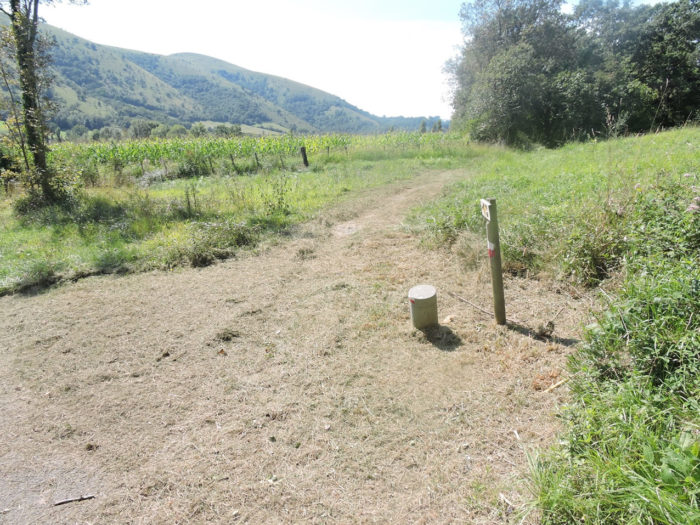























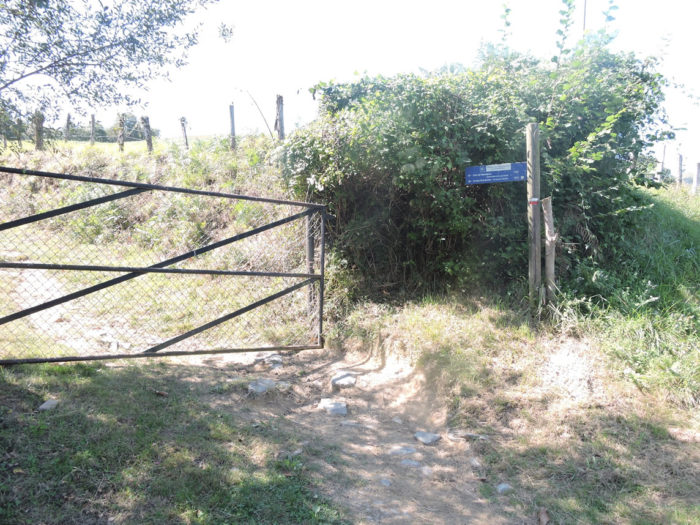







 General overview of the difficulties of the route : course without great difficulty, except the climb to Galzetaburu Cross.
General overview of the difficulties of the route : course without great difficulty, except the climb to Galzetaburu Cross.





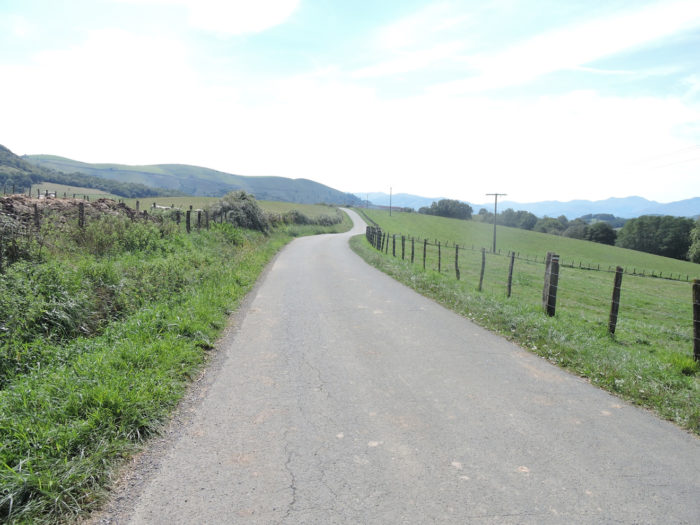









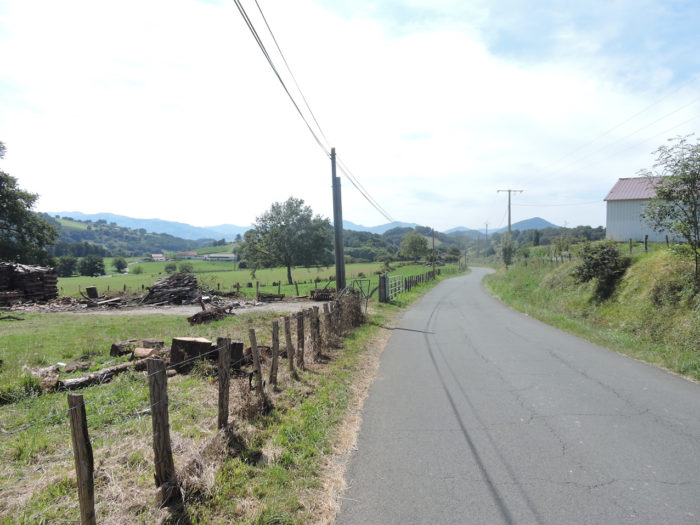
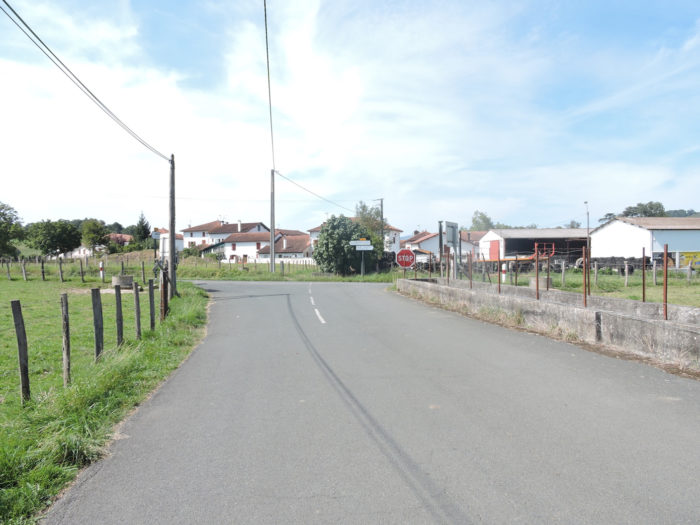





















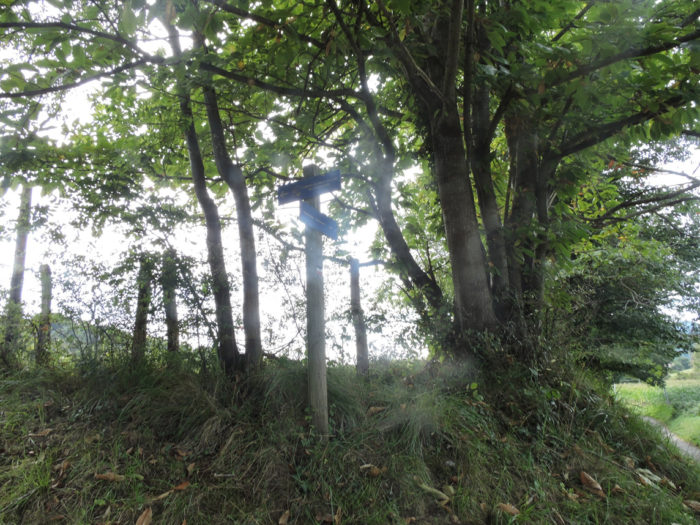











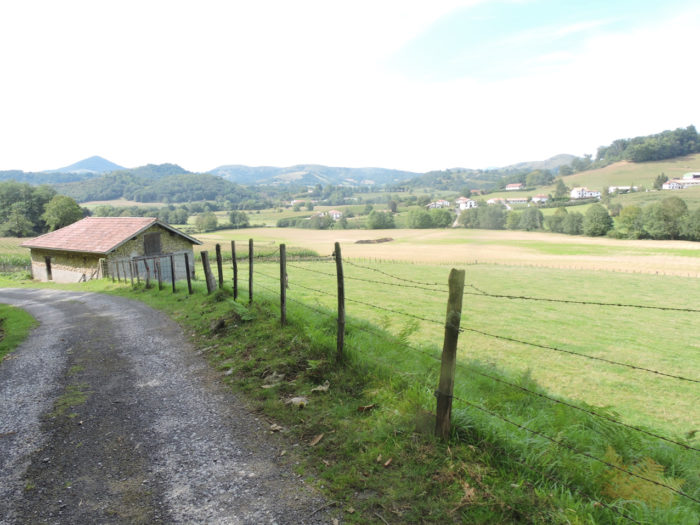






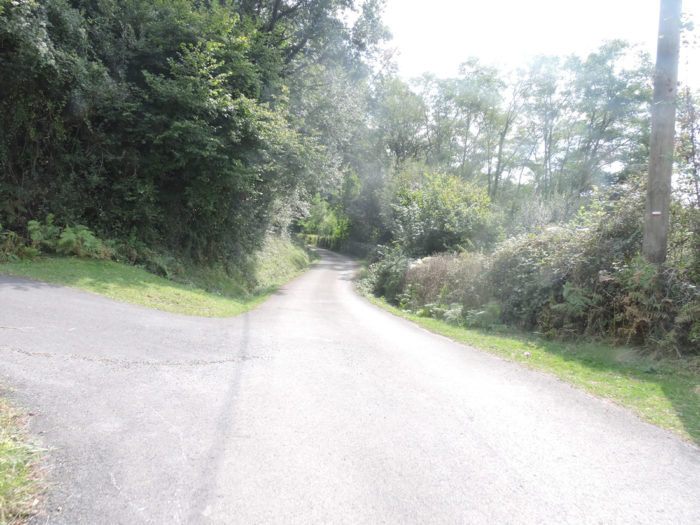









 General overview of the difficulties of the route: course without any difficulty.
General overview of the difficulties of the route: course without any difficulty.


